
PL A N N ING O


ranc e and th uthE s t eR




ranc e and th uthE s t eR
Document 1: Growth Plan
Version:
Version Release Date: Revisions:
V1 October 2012
V2 31 October 2012
Document 2: Implementation Schedule
Version:
Version Release Date: Revisions:
V1 October 2012
V2 31 October 2012
V3 16 November 2012
Purpose:
Endorsement by: Shire of Esperance; GEDC; ECCI; and Department of Planning
Submission to Department of Regional Development and Lands
Purpose:
Endorsement by: Shire of Esperance; GEDC; ECCI; and Department of Planning
Submission to Department of Regional Development and Lands
Growth Plan Launch print run
Updates to formats and correction of minor errors Updates to formats and correction of minor errors Updates to implementation schedule (indicative costs and funding sources)‘The South-East is Western Australia’s most desirable regional destination for lifestyle, work, unique experiences and investment. It is recognised for its vibrant, welcoming communities, pristine environment and diverse economy’.


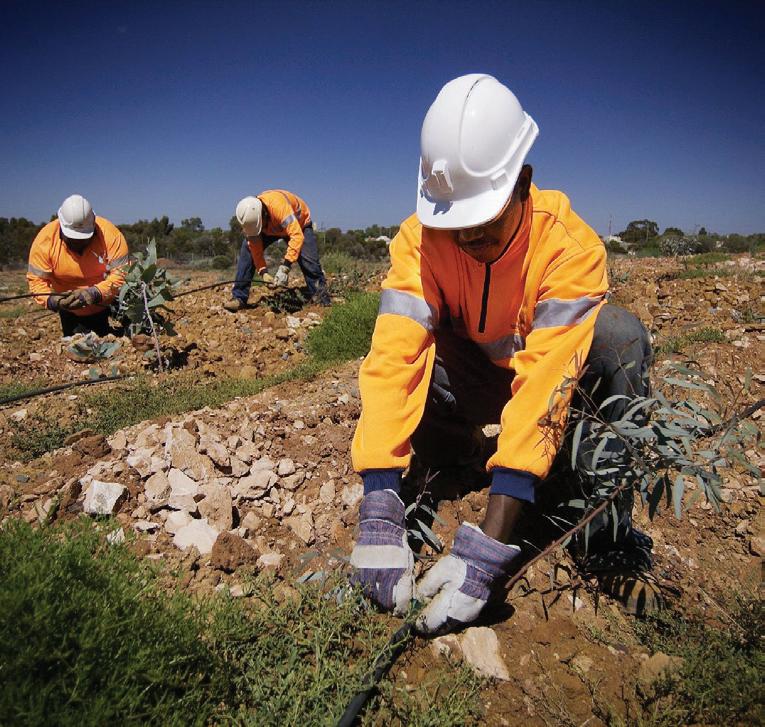
Esperance is entering an exciting phase, embracing a new vision for the town and the communities of the South East region. As one of a network of nine ‘SuperTowns’, it has been identified to play a key role in the future development of regional Western Australia.
The State’s population is set to double over the next 40 years to almost 4.5 million people. We want to ensure that Esperance and the communities of the South East region continue to grow while retaining vibrant, regional centres capable of accommodating sustainable economic and population growth.
The Regional Centres Development Plan (SuperTowns) is a Royalties for Regions initiative aimed at encouraging regional communities in the southern half of Western Australia to plan and prepare for the future.
Through Royalties for Regions, 25 per cent of the State’s mining and onshore petroleum royalties is being returned to regional areas each year as an additional investment in projects, infrastructure and community services to build regional communities. Royalties for Regions has delivered more than 3,000 projects and programs since the initiative commenced in late 2008.
As part of this broader focus on regional development, SuperTowns aims to help communities become more desirable places to live, work and invest. The program encourages towns to build on their unique character and economic drivers to support the development of industry, services and infrastructure. There is also a focus on improving community wellbeing and enhancing our unique, pristine regional environments that will play a key role in attracting people to our regions.
Nine towns, including Esperance, were identified as communities with the potential for significant growth. Each SuperTown was required to prepare a Growth Plan, which now sets out a shared vision and an agenda around which all sectors and levels of government can work together to support and prepare for the future. Esperance has developed a Growth Plan with a strategic, sub-regional focus across the South East region including the Shires of Dundas and Ravensthorpe.
‘Planning our Future: A Growth Plan for Esperance and the South East Region’ reflects the extensive work undertaken by local partnerships comprising the Shire of Esperance, Goldfields-Esperance Development Commission and the Esperance Chamber of Commerce and Industry, in consultation with local and neighbouring communities and State agencies. The Growth Plan is vital in identifying the needs of the community and providing a roadmap to enable future public and private investment, growth, prosperity and wellbeing in the South East region.
The SuperTowns Growth Plans mark a key milestone for regional development in WA. They are living documents that will be regularly reviewed as our communities develop. The Plans provide a range of strategies for attracting business, industry, families and individuals to take advantage of the opportunities SuperTowns offer. We look forward to a bright future for Esperance and the communities of the South East Region.
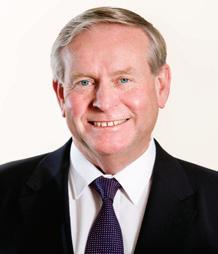
 Hon Colin Barnett MLA Premier Hon Brendon Grylls MLA Minister for Regional Development; Lands
Hon Colin Barnett MLA Premier Hon Brendon Grylls MLA Minister for Regional Development; Lands
‘Planning our Future’: A Growth Plan for Esperance and the South-East Region has been developed consistent with the Regional Centres Development Program, known as ‘SuperTowns’. The selection of Esperance as a SuperTown was the catalyst for this regional Growth Planning process. As proactive leaders in our communities, we have embraced this opportunity afforded by the ‘SuperTowns’ initiative and have commenced planning for economic and population growth and to provide quality infrastructure, employment opportunities and community services to facilitate this. Together, we will build the capacity and vibrancy of our communities providing an attractive choice for people wanting to live in regional areas.
The Growth Planning process has been led by an innovative public-private partnership between the GoldfieldsEsperance Development Commission, Shire of Esperance and the Esperance Chamber of Commerce and Industry, together with local Members of Parliament and our community. We are proud to be pioneering this model for delivering regional development. We have been supported through this process by the Department of Regional Development and Lands, Landcorp and the Department of Planning with funding assistance from the Royalties for Regions Regional Centres Development Fund 2011-2012. There has been consultation with a variety of local, regional and State stakeholders and we thank them all for their input and collaboration over the last twelve months. We look forward to continuing our collaborative approach to drive the delivery and implementation of our vision for the future.
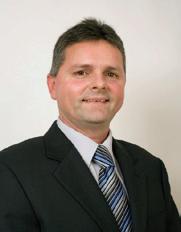 Jon Price chairman Goldfields-Esperance Development Commission
Jon Price chairman Goldfields-Esperance Development Commission
The Shire of Esperance is proud to be involved in the development of the Growth Plan for Esperance and the South-East region. The Growth Plan will provide guidance and direction on how we can achieve growth sustainably while ensuring our community aspirations are intertwined with future investment opportunities. We are pleased that this Growth Plan has been broadened to include our neighbouring Shires of Ravensthorpe and Dundas, taking on a regional focus and look forward to enhancing this partnership into the future. Having an overarching community vision for the region will improve decision making and access to funding across all levels of Government. Developing a clear economic development focus is a vital component of ensuring strong and vibrant communities into the future, and I am excited that this document and the partnership approach taken in developing it are at the forefront of this initiative. We would also like to commend the State Government on its foresight in supporting us to develop a Growth Plan that provides a clear long term direction for Esperance and the South-East region.
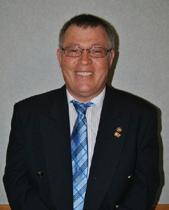
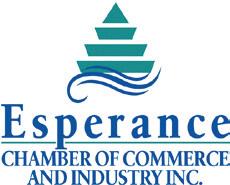 Cr Malcolm Heasman Shire President Shire
Cr Malcolm Heasman Shire President Shire
of Esperance
Esperance and the South-East region is comprised of multiple dynamic communities with a diverse economy. To maximise the opportunities available, strong leadership and planning are required, to ensure the vibrancy of these economies not only remains but continues to thrive in years to come. Esperance is the hub of this region and has many natural and physical advantages to ensure its competitive advantage remains into the future. With great agricultural lands, the deepest port in the Southern half of the state, mining on its doorstep, direct access to the Southern Ocean, strong retail and light manufacturing and its physical beauty, Esperance and the South-East region is positioned to capitalise on its potential. This Growth Plan, a collaborative effort, seeks to ensure that the future of this region continues to have a strong, diverse and thriving economy and communities into the future. By planning for our future, the Esperance Chamber of Commerce and Industry believes that these opportunities can be realised and potential obstacles can be identified and overcome. The ECCI is pleased to be proactive in planning for the dynamic future of Esperance and the South-East region.
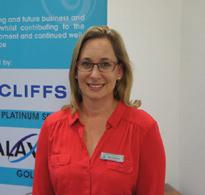 Melisa Rowe President Esperance chamber of commerce and Industry
A Growth Plan for Esperance and the South-East Region
Melisa Rowe President Esperance chamber of commerce and Industry
A Growth Plan for Esperance and the South-East Region
Shire of Esperance Windich Street
PO Box 507, ESPERANCE WA 6450
Phone: (08) 9071 0666
Fax: (08) 9071 0600
Email: shire@esperance.wa.gov.au
Website: www.esperance.wa.gov.au
Goldfields - Esperance Development Commission
Suite 26c, Dutton Arcade - 91 Dempster Street
PO Box 632, ESPERANCE WA 6450
Phone: (08) 9083 2222
Fax: (08) 9071 3765
Email: gedcesp@gedc.wa.gov.au
Website: www.gedc.wa.gov.au
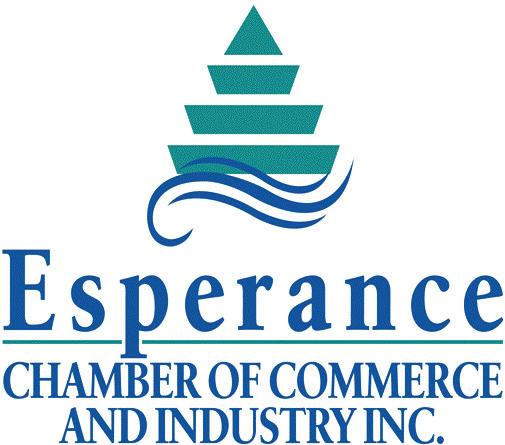

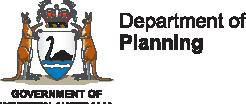


Esperance Chamber of Commerce and Industry
Suite 26b, Dutton Arcade - 91 Dempster Street
PO Box 817, ESPERANCE WA 6450
Phone: (08) 9071 5142
Fax: (08) 9072 1693
Email: admin@esperancecci.com.au
Website: www.esperancecci.com.au
Department of Regional Development and Lands
Department of Planning Landcorp
Hon. Wendy Duncan MLC
Member for Mining and Pastoral
Dr Graham Jacobs MLA
Member for Eyre
Esperance SuperTown Community Reference Group


Planning our Future: A Growth Plan for Esperance and the South East Region (the Growth Plan) sets out our vision and guiding principles to enable economic growth, prosperity and wellbeing for the communities of the South-East region (the region) (Shires of Esperance, Dundas and Ravensthorpe). The Growth Plan includes actions, projects and initiatives to promote and share the benefits of growth across the region and accommodate a population of up to 25,000 in Esperance by 2036. This Growth Plan has been prepared by the Esperance SuperTowns Project Team in collaboration with stakeholders and the communities of our region.
‘The South-East is Western Australia’s most desirable regional destination for lifestyle, work, unique experiences and investment. It is recognised for its vibrant, welcoming communities, pristine environment and diverse economy’.
The Growth Plan identifies six guiding principles to achieve our vision.
Our region will comprise diverse and thriving business, industry and service hubs where innovative opportunities are actively pursued and fostered through:
• A wealth of diverse and quality employment opportunities;
• Attraction and retention of knowledge and investment, people and skills;
• Supportive business environments; and
• Sustainable growth supported by innovative industry.
Our region will comprise relaxed, family friendly communities with vibrant hearts and a wealth of activities for all, we will ensure that our communities:
• Enjoy a diverse range of social, recreational and volunteer opportunities;
• Respect diversity and be inclusive of all peoples;
• Are safe and healthy with a focus on wellbeing;
• Have a strong connection with our unique environment; and
• Celebrate their rich cultural heritage.
Our built form will capture our unique character and setting; connecting people and places and integrating sustainable infrastructure that meets the needs of our growing communities and economy by:
• Creating active and vibrant spaces;
• Developing well connected and liveable communities;
• Encouraging design elements to celebrate our bush and coast communities; and
• Supporting sustainable building and infrastructure design.
Our region has unique bush and coastal communities that will engage and interact harmoniously with their environment, and support the:
• Sustainable stewardship of our natural assets;
• Conservation and enhancement of our natural environment;
• Responsible access, use and enjoyment of our natural environment; and
• Development of sustainable town sites, integrating natural elements and connecting us to our environment.
We will deliver sustainable, integrated and high quality, modern infrastructure to meet our social, economic and environmental needs, to create well connected, liveable communities, vibrant economies and sustainable employment opportunities, by:
• Adopting a whole-of-government approach towards infrastructure provision to meet our current and future needs for growth;
• Providing quality regional infrastructure at a similar or better standard to metropolitan areas;
• Embracing emerging infrastructure opportunities and being leaders in the State for delivering new and innovative ‘region building’ infrastructure;
• Improving investment in regional infrastructure to ensure greater prosperity, productivity and growth of our communities; and
• Supporting public-private partnerships and other mechanisms to help deliver efficient and timely infrastructure projects.
We will embrace collaborative and proactive leadership delivering on the values and aspirations of our communities through:
• A cross-organisational approach delivered through strategic partnerships;
• Community ownership through active engagement; and
• A focus on delivering shared outcomes.
A number of actions, projects and initiatives for Local and State Government are identified to implement the Growth Plan vision. The Local Governments of the South-East region have identified eight locally led priority actions, projects for the Growth Plan period 2012 - 2016. These are:
• Esperance Waterfront Redevelopment including the iconic Tanker Jetty;
• Esperance Town Centre Revitalisation;
• Esperance Economic Development Program including the Esperance Enterprise Unit;
• Esperance Accommodation Options;
• Esperance Greater Sports Ground and Indoor Stadium Redevelopment;
• Esperance Waste Facility;
• Norseman Visitor Gateway Centre; and
• Ravensthorpe Heavy Haulage Bypass.
Additionally, many key State Government Agency actions, projects and initiatives are identified as priorities for growth however the delivery of these projects is outside of Local Government and the Esperance SuperTowns Project Team remit. These projects, such as the Esperance Port Sea and Land Multi User Iron Ore Facility Upgrade, Esperance Health Campus Redevelopment and the Redevelopment of the Goldfields Institute of Technology, Esperance Campus, will be significant economic drivers and critical for the development of the region.

Our Growth Plan comprises the following suite of documents:
Document 1 - ‘Planning our Future’: A Growth Plan for Esperance and the South-East Region;
Document 2 - ‘Planning our Future’: Growth Plan Implementation Schedule;
Document 3 - ‘Planning our Future’: Growth Plan Community Engagement Report; and
Document 4 - Esperance SuperTown Interim Growth and Implementation Plan (March 2012)
DAFwA: Department of Agriculture and Food WA
DEc: Department of Environment and Conservation
DoP: Department of Planning
Dow: Department of Water
EccI: Esperance Chamber of Commerce and Industry
EPSL: Esperance Port Sea and Land
ESPT: Esperance SuperTowns Project Team
GEDc: Goldfields-Esperance Development Commission
RDA: Regional Development Australia
RDc: Regional Development Commission
RDco: Regional Development Council
RDL: Department of Regional Development and Lands
ScNRm: South Coast Natural Resource Management
SIHI: Southern Inland Health Initiative
TBc: To Be Confirmed
wA: Western Australia
Economic Development - Economic development is a broad term that generally refers to the sustained, concerted effort of policymakers and communities to promote standard of living and economic health in a specific area. Such effort can involve multiple areas including development of human capital, critical infrastructure, regional competitiveness, environmental sustainability, social inclusion, health, safety and literacy, among other initiatives.
Economic Growth - The increase in the productive capacity of our economy over the Growth Plan Period. This includes an improvement in the quality of life of our communities through an increased share of jobs and prosperity.
Esperance SuperTown Project Team - The lead agencies and organisations who will implement the Esperance SuperTowns initiative and the vision of this regional Growth Plan, together with stakeholders and our communities.
FIFO / DIDO - Fly-in, Fly-out and Drive-in, Drive out – in this Growth Plan the terms are used interchangeably to describe workers who live in or out of the region and travel to work in or out of the region.
Growth Plan -This Growth Plan is a non-statutory strategic planning document that builds on existing statutory plans to set the direction for economic growth and community population expansion within Esperance and the South-East region. It is an adaptive, plan to facilitate growth and builds on existing statutory requirements for Local Governments to develop integrated strategic planning frameworks, aligned with Strategic Community Plans. It incorporates population growth opportunities and strategies. This Growth Plan has been prepared to meet the requirements of the Department of Regional Development and Lands addressing the key focus areas identified within the Regional Centres Development Program Framework and provides a common action agenda for all State and Local Government delivery partners.
Growth Plan Period - ‘Planning our Future’ A Growth Plan for Esperance and the South East Region has a plan period up to 2036.
Guiding Principle - An overarching goal or aspiration identified within this Plan to set the direction and values for growth within our communities.
Long Term - In this Growth Plan, long term denotes the Growth Plan period 2026-2036.
medium Term - In this Growth Plan, medium term denotes the Growth Plan period 2016-2026.
Regional centres Development Program - See ‘SuperTowns’ overleaf.
Short Term - In this Growth Plan, short term denotes the Growth Plan period 2012-2016.
South-East Region - In this Growth Plan the South-East region comprises the Shires of Dundas, Esperance and Ravensthorpe.
Stakeholder - Partner organisations, consisting of Local Governments, State Government agencies, industry and community bodies, who are engaged with to develop and implement the guiding principles, actions, projects and initiatives of this Growth Plan.
SuperTown - A SuperTown is a selected community that has been chosen to play a critical role in absorbing some of the State’s predicted population growth. Each SuperTown has been required to put in place a Growth Plan endorsed by the Local Government, WAPC, RDC and the SuperTowns Steering Committee and identify project opportunities for funding proposals and financial assistance.
SuperTowns - SuperTowns is a program for the selection of towns that meet set criteria, chosen to develop a SuperTown Growth Plan within the Regional Centres Development Plan Framework. The term is used interchangeably with the Regional Centres Development Plan.
SuperTowns Steering committee- The SuperTowns Steering Committee comprises the following members:
• Director General, Department of Regional Development and Lands (chair);
• Director General, Department of Planning;
• Director General, Department of Local Government;
• Chairman, Western Australian Planning Commission;
• Chief Executive Officer, LandCorp;
• Chairman Regional Development Council;
• Chief Executive Officers, selected Regional Development Commissions i.e. GEDC CEO;
• Regional Development Australia representative; and
• Office of the Minister for Regional Development; Lands representative (observer).
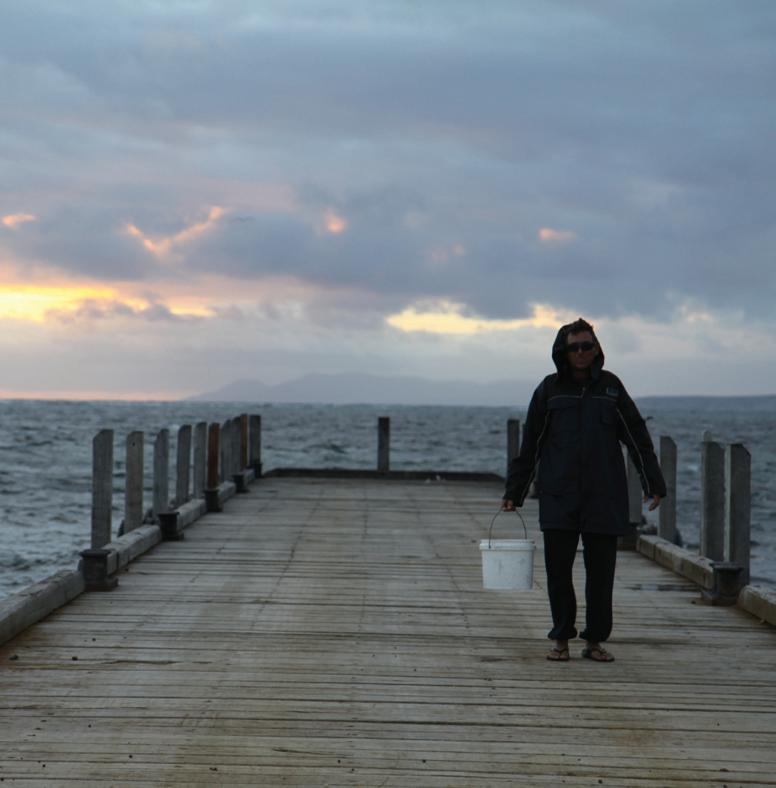
‘Planning our Future’ is a Growth Plan for Esperance and the South-East Region (the region). It provides an opportune moment for us to set out how we will sustainably grow our economy, strengthen our communities, shape better quality places with distinctive local character, and protect and enhance the environment. It also provides opportunity for improved inter-agency and public-private collaboration to govern and work towards a collective vision for the future. The region is comprised of the Shires of Esperance, Ravensthorpe and Dundas. The Growth Plan sets the vision and guiding principles for the development of Esperance and the region until 2036. The vision will be achieved by successfully implementing the Growth Plan’s strategies, actions, projects and initiatives. It is a sub-regional plan that aims to coordinate and integrate public policy, in order to accurately set priorities and target resources. Implementing the projects in our Growth Plan will attract investment and enable people to take advantage of the significant opportunities available throughout the region. The Growth Plan is threaded together with the common themes of sustainable development and social inclusion and encourages the provision of efficient and timely enabling infrastructure to facilitate growth.
With a focus on Esperance as the regional hub, the Growth Plan will ensure that the region supports growth and innovation in a wide variety of businesses and industries. Sustained and improved business activity of all kinds and at all scales will contribute to a stronger regional economy. Business opportunities will be enhanced by the roll out of fibre optic and satellite connections for faster internet speeds and increased research and training cooperation between business and the region’s education centres. While ongoing diversification of the economy will be strived for, the region’s major industries of agriculture, mining and tourism are still acknowledged as key economic drivers.
We will grow our population, encouraging more people to choose to live and work here. There is a need to ensure the adequate provision of housing to accommodate our people and provide quality affordable homes and neighbourhoods. Attractive places will be designed to sustain happy, healthy communities and meet people’s needs and aspirations throughout their lives. This is also important for attracting new businesses and retaining skilled workers. Quality of place will play a major role in the economic success of the region and will improve the quality of life for our people. The Growth Plan aims to encourage high quality distinctive places and encourage a shift towards more sustainable transport modes and travel behaviour. Interconnected networks of green spaces will be improved and developed to protect and provide habitats and landscapes, to ensure that biodiversity thrives alongside human activity.
Protecting and enhancing the region’s natural, cultural and historic assets will strengthen our regional and local identities. The region is attractive and diverse with a variety of tourist destinations located within a friendly network of settlements, and a living, working environment. Our principal settlements will be the focus for good quality community infrastructure so that people will choose to live in places that offer a choice of opportunities. The Growth Plan will contribute to the mitigation of and adaptation to climate
change, shifting towards a low carbon and zero waste economy by using our land and resources more efficiently. By making our towns more desirable places to live and work in, the Growth Plan will also ensure that new development embraces a sustainable approach to the release of land, emerging renewable technologies, best practice design principles and energy efficiency measures.
This Growth Plan sets out our vision for growth, utilising six guiding principles and clearly identifies key priority actions, projects and initiatives for the short-term, medium-term and long-term. The baseline data to support this document is contained in the Esperance SuperTowns Interim Growth and Implementation Plan (Esperance Interim Growth Plan, March 2012 - Document 4) and a Community Engagement Report (Document 3). An Implementation Schedule accompanying this Growth Plan (Document 2) contains all actions for growth, including the key priorities for the short-term, medium-term and long-term outlined within this document. Our priorities will continue to be refined and reprioritised as the Growth Plan is reviewed over the Growth Plan period.
For the purposes of this Growth Plan and the accompanying Implementation Schedule (Document 2), identified timeframes are defined below. All timeframes are indicative unless specified.
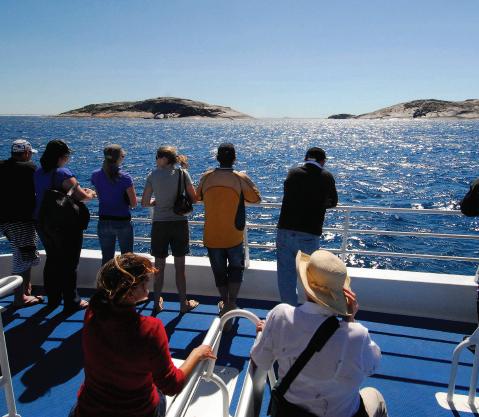
With the population forecast to double in Western Australia over the next 30 to 40 years, the State Government, through Royalties for Regions, has established the Regional Centres Development Program – referred to as ‘SuperTowns’. The Program encourages regional communities to accelerate their local planning processes to ensure settlements are well prepared to take advantage of opportunities arising from future economic opportunities and population growth.
The State Government’s SuperTowns vision is:
‘To have balanced, well-connected regional communities, with lifestyle options and access to services. SuperTowns will have affordable, quality housing and a growing and diverse range of job opportunities. They will offer more choices for people living in regional areas and an attractive alternative to living in the metropolitan area.’
The overarching SuperTowns Program involved State and Local agencies and organisations as well as Local Project Teams, such as the Esperance SuperTowns Project Team, as demonstrated in Figure 1 (overleaf).
Esperance was selected as an inaugural ‘SuperTown’ in July 2011. SuperTowns were tasked with undertaking a Growth Planning process to analyse the driving forces, pressures, impacts and responses for growth and identify transformational projects. An initial round of funding was made available to the Esperance SuperTowns Project Team to support the development of the Esperance Interim Growth Plan (March 2012).
Esperance was awarded funds for three transformational projects in May 2012 – these were: the Esperance Waterfront, Esperance Town Centre Revitalisation and Esperance Economic Development Program. The Esperance Waterfront and Town Centre Revitalisation Projects are now underway, with the Esperance Economic Development Program due to commence in late 2012.
Regional Centres Development Program Governance Structure
Cabinet
Steering Committee Minister
State Government Agencies
Department of Housing
Department of Education
Department of Training and Workplace Development
Department of Water
Department of Indigenous Affairs
Department of Environment and Conservation
Department of Agriculture
Water Corporation
Horizon Power
Main Roads WA
WALGA and other agencies
SuperTowns Implementation Unit
Community Reference Group
Wider Community
Shire of Dundas
Shire of Ravensthorpe
Esperance SuperTown Project Team
Shire of Esperance
Goldfields-Esperance Development Commission (GEDC)
Esperance Chamber of Commerce and Industry (ECCI)
Community Reference Group
Local Members of Parliament
Regional Development and Lands
Department of Planning LandCorp
‘Planning our Future’ A Growth Plan for Esperance and the South-East Region
This Growth Plan has been developed from the Esperance SuperTown Interim Growth and Implementation Plan (Esperance Interim Growth Plan - Document 4), which was prepared by a team of consultants, in conjunction with the Shire of Esperance, Goldfields-Esperance Development Commission (GEDC) and Esperance Chamber of Commerce and Industry (ECCI) in liaison with government, business and community stakeholders. This is an innovative approach to strategic planning between the public sector, private sector and the community.
The Esperance Interim Growth Plan and this ‘Planning our Future’ Growth Plan have been developed over two stages of stakeholder engagement and community consultation. The first stage between August 2011 and March 2012 included community workshops to identify the issues, opportunities and challenges associated with growth and to develop principles and scenarios for the future, together with open days to gather community feedback. The second stage between March and October 2012, involved seeking feedback from stakeholder groups and the community on the baseline data within the Esperance Interim
A Growth Plan for Esperance and the South-East Region
FIGURE - AND LOcALGrowth Plan and this ‘Planning our Future’ document. Details of community engagement and feedback are provided in a Community Engagement Report (Document 3). Engagement was facilitated through the preparation of a variety of different documents including a series of issues papers bringing together a range of information sources and analysis to identify strengths and weaknesses, constraints and opportunities. The key themes for the Esperance Interim Growth Plan, which were taken from public engagement and emerging state and regional planning themes and form the basis of this ‘Planning our Future’ Growth Plan, include:
• Improving community infrastructure and facilitating better access to services and amenities, including health services (Growth Plan Guiding Principle 2);
• Retaining the character and identity of Esperance, regional town sites and the unique environment (Growth Plan Guiding Principles 2, 3, 4);
• Importance of transport infrastructure in supporting regional growth activity (Growth Plan Guiding Principle 5);
• Meeting basic infrastructure needs to facilitate future growth – energy, water and food (Growth Plan Guiding Principle 5);
• Providing opportunities for employment and innovation (Growth Plan Guiding Principle 1);
• Protecting what we value in our region including agriculture, natural landscapes, community, lifestyle and culture (Growth Plan Guiding Principle 2, 4);
• Timing and sequencing of urban development and infrastructure provision (Growth Plan Guiding Principle 4); and
• Need for proactive leadership (Guiding Principle 6).
The Esperance Interim Growth Plan was endorsed by the Esperance SuperTowns Project Team in February 2012, noted by the DoP in February 2012 and submitted to RDL in March 2012. It provides the base line information for this ‘Planning our Future’ Growth Plan. Post March 2012, the Esperance SuperTowns Project Team elected to develop a revised Growth Plan with a regional focus to recognise the intrinsic connections between the districts of Esperance, Dundas and Ravensthorpe, and acknowledging that the benefits of the Regional Centres Development Program projects will be shared with and impact positively on our nearest neighbours. To date, consultation with neighbouring Shires has taken place with Shire representatives. Future revisions of the Growth Plan will seek community engagement across the region. Download the Esperance Interim Growth

The Growth Plan has the support of our local communities and is uniquely placed to influence existing and emerging programs, frameworks, plans and strategies within State and Local Government, other agencies and the private sector. Some of the most relevant planning documents influencing the development of our Growth Plan are the emerging Draft Goldfields-Esperance Planning and Infrastructure Framework (DoP), the Goldfields-Esperance Strategic Development Plan 2011 - 2021 (RDA / GEDC), the
emerging Regional Investment Blueprint (RDC / GEDC) and draft Strategic Community Plans of the Local Governments. The Esperance Interim Growth Plan baseline data will be reviewed and updated during the next revision of the Growth Plan.
Figure 2 demonstrates how this ‘Planning our Future’ Growth Plan fits into the Western Australian State Planning and Regional Development Framework. The Growth Plan is a non-statutory, sub-regional level document which will inform Local, Regional and State Government priorities. The Department of Regional Development and Lands will use the Growth Plan to assist with prioritising Government Agency priorities within the region. State Government Agency input has been sought into the Growth Planning process and Agencies will now incorporate the Growth Plan vision and population scenarios into their regular planning and forecasting for the region.
Regional Development
Regional Investment Blueprint Framework
Regional Investment Blueprints
Strategic Planning Framework
Planning
State Planning Policy Framework
GEDC/ RDA Strategic Development Plan
Regional Planning and Infrastructure Frameworks
Regional Investment Initiatives
Regional Planning Initiatives
The South-East region is a combination of many diverse and distinctive environments, and is rich in biodiversity. It is characterised by some of Australia’s most attractive and dramatic landscapes. The region covers 150,869 square kilometres of land - about 20 percent of the total Goldfields-Esperance region. Home to around 17, 000 people (refer to Table 1 for South-East region demographics) the region comprises the Shires of Dundas, Esperance and Ravensthorpe as shown in Figures 3 and 4. The region’s primary settlements of Esperance, Ravensthorpe and Norseman are connected by the South Coast Highway and Coolgardie-Esperance Highway. Esperance and Ravensthorpe are served by airports with regular Skywest flights connecting to Perth and a connection between Esperance and Ravensthorpe. There is a major transport corridor comprising a freight-carrying railway that runs north between the Esperance Port and the Goldfields. The Esperance Port, the deepest Port is the Southern Hemisphere, represents major infrastructure of State significance, serving the South-East region, southern agricultural areas of WA and the expanding resources areas in the Goldfields, the Yilgarn province and beyond.
• Esperance is 720km from Perth, 175km from Ravensthorpe and 200km from Norseman
• Norseman is 725km from Perth, 185km from Kalgoorlie
• Ravensthorpe is 530km km from Perth and 290km from Albany
• Esperance Airport handles 47,000 air passengers per year
• The Shire of Esperance covers 42,450 square kilometres
• The Shire of Dundas covers 93,000 square kilometres
• The Shire of Ravensthorpe covers 13,533 square kilometres
The extent of the region and the long distances between settlements may impair the region’s ability to function efficiently as a network of communities, but the spirit and friendliness of our people cannot be surpassed. Physical isolation has led to a culture of enterprise, a ‘can-do’ attitude and significant levels of volunteering within communities.
• There are currently low levels of unemployment within the region
• Unemployment in Shire of Esperance has dropped from 4.4% (2006 census) to 1.8% in the Small Area Labour Markets Report (June 2012)
• The Shire of Esperance has only 155 people registered as unemployed (June 2012)
• The Shire of Dundas has an unemployment rate of 3.0% (22 unemployed)
• The Shire of Ravensthorpe has a very low unemployment rate of 0.8% (13 people unemployed)
• A high workforce participation rate combined with low unemployment rate is creating a local labour shortage
• There is a shortage of labour and skills in areas including: - construction; - trades; - engineering; and - retail and hospitality.
Sources: Australian Bureau of Statistics (ABS), Census, 2006 Small Area Labour Markets Report, June 2012, Department of Education, Employment and Workplace Relations
The unemployment rate in the Shire of Esperance was 1.8% in June 2012 (Small Area Labour Markets Report)
• Agriculture – cereal cropping, cattle and sheep farming
• Mining and resources (gold, nickel, spodumene, iron ore)
• Transport, postal and warehousing
• Education and training
• Health services
• Public administration
• Retail
• Construction and manufacturing
• Agriculture:
- Food production
- Valuing adding including secondary processing and new products
- Research, development and innovation
• Mining
• Tourism
• Transport and logistics
• Services to Port activities, mining and resources
• Manufacturing
• Fishing
• Services to agriculture
• Services to mining and resources
• Public administration
• Health care and social assistance
• Knowledge intensive industries
• Export orientated industries
Source: Goldfields-Esperance – A Region in Profile, 2011
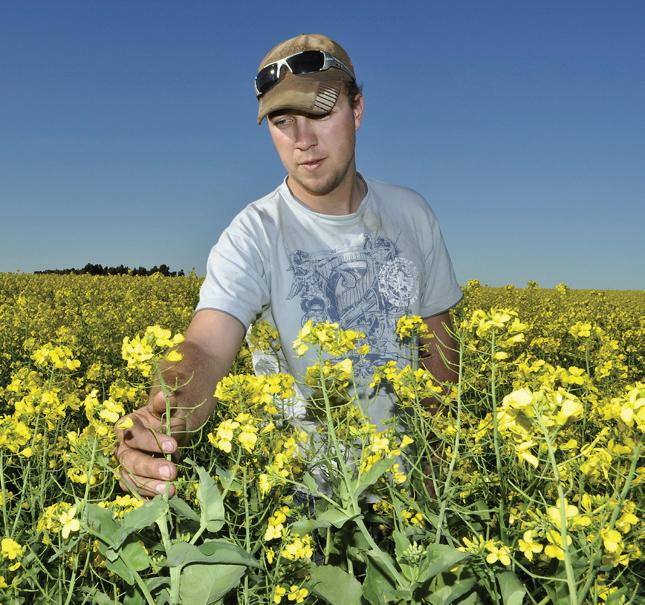
Esperance Port is a key strategic asset for the region and State. In 2012, the Port facilitated approximately $100million of royalities for the State Government.
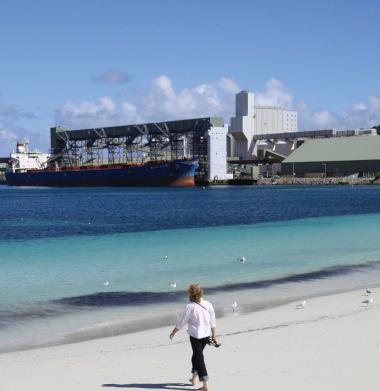
The Esperance Interim Growth Plan (Document 4) contains detailed baseline information on community, economy, infrastructure, transport, environment, land use and the built environment. In addition further economic and social profiling will be undertaken as part of the Esperance Economic Development Program which is funded by Royalties for Regions SuperTowns Regional Centres Development Fund, 2011 - 2012, and is due to commence later this year. This program will better inform the Esperance SuperTowns Project Team about the development of key economic drivers, growth industries and employment, and population attraction strategies.
Our region has a range of strategic assets, including major transport corridors, biodiversity hotspots, natural resources and raw materials. Many of these strategic assets provide us with significant opportunities and drivers for future growth.
Our key Strategic Assets are listed in Table 2 below.
Road transport corridors
Energy supply infrastructure
Ravensthorpe Airport
Esperance Port
Grain storage facilities
Water supply infrastructure
National Parks and Biodiversity Hotspots
Recherche Archipelago
Educational and training facilities
Rail transport corridors
Wastewater infrastructure
Esperance Airport
Mine sites
Agricultural land
Inland gas pipeline
Natural resources and raw materials
Southern Ocean
Tourism infrastructure
Esperance and the South-East region face a variety of challenges as the area grows, including global factors like resource downturns and a high Australian dollar that may constrain growth potential. This Growth Plan considers how to meet these challenges and optimise opportunities to deliver growth, prosperity and community wellbeing. The growth of the primary service hub of Esperance, the largest settlement in the region, will place significant pressure on transport networks, education, health, community and tourism infrastructure and increase pressures on the natural environment. The challenges require a focus on sustainable solutions.
Some key challenges and opportunities for growth are listed in table 3 overleaf.
• Major infrastructure requirements –time consuming and costly
• Delivering new infrastructure and services to facilitate growth.
• Skills and labour shortages
• Low unemployment rates
• Difficulties filling vacancies - lack of experience, suitable applicants, no applicants
• Retention of existing population
• Public-private partnerships to deliver new infrastructure
• Improved training facilities
• Migration attraction schemes
• Marketing and Branding
• Collaboration with business and industry
• Improve local education and training pathways and especially youth links to local industry
• Develop strategies to attract local youth to the region after travel, university, training or with young families
• Attraction and retention of new
• Promote quality of life with focus on community population
• Improve amenity and access to essential services like
• Attraction of additional workers an health and education immediate requirement for shortterm growth
• Providing sufficient and affordable
• Key worker housing provision housing options and a variety of
• Developing affordable housing options housing choice
• Accommodation pressures from new
• Development of residential zoned land
• Reducing ‘red tape’ to bring forward development construction projects
• High demand for rentals due to influx
• Mixed use and higher densities
• Public-private partnerships of workers for construction projects
• Low vacancy rates for rentals
• Comparatively high construction costs are inhibiting the take up of new lots
• Freight costs
• Energy supply infrastructure - costly and inefficient
• Waste management
• Improve major road networks, including bypass and overtaking lanes
• Develop reliance on locally produced goods and services
• Improve other transportation links including air and rail
• Promote renewable energy supply and projects
• Explore domestic energy production
• Waste elimination, recycling and reuse opportunities
• Regional waste opportunities optimising economies of scale
• Development constraints
• Managing land-use conflicts
• Isolation - distance and travel
• Lack of access to digital capability
• Loss of small town, or regional town character
• Seek alternative uses, development areas or alternative ways of developing i.e. increased infill, mixed use and higher densities in existing areas, utilising new technologies
• Develop and implement clear planning regulations protecting areas of environmental or community value and guiding development to appropriate zones.
• Market our region to those looking to ‘getaway’
• Promote our communities as enterprising and selfreliant
• Increase competiveness of air transport
• Explore opportunities to increase bus travel options and passenger rail into the long term
• Optimise digital economy to use the internet for business and recreation
• Opportunity to optimise digital economy.
• Promote digital pilot or test schemes such as telehealth.
• Maintain community spirit through volunteerism and community engagement
• Develop precincts of character including heritage precincts
• Identify and protect heritage values
• Local events and festivals
• Location of existing infrastructure –
• Plan for and mitigate against negative impacts using rail and road corridors through town buffers and restricting sensitive uses. Protecting sites, fuel pipeline along Esperance infrastructure for growth in commercial, primary Waterfront production and industry sectors.
• Access to health services
• Improve health services
• Improve mental health and wellbeing services
• Become a rural centre of excellence for medical training
• Out-dated and aged community infrastructure
• Climate change risks
• Accommodating population growth without damaging our unique environments
• Opportunity for new co-located and shared facilities and services
• Opportunity to undertake risk assessment and planning
• Develop sustainable spatial growth options and planning
• Education and awareness of environmental assets
• Implement environmental management plans for key assets
• Encourage sustainable behaviours
• Better management of recreational behaviour and uses
• Managing the social impacts of
• Explore and understand the opportunities and issues potential FIFO – DIDO
• Provide strong leadership on this issue on behalf of the community
• Advocate for family friendly rosters and working arrangements that meet the needs of our community and families
• Population growth outstrips
• Good planning and monitoring of population infrastructure and service provision requirements
• Effective project management to deliver on time
• Strong leadership
• Secure and develop infrastructure prior to new development
• Impacts of global recession and resources ‘bust’
• Tourism downturns
• Social inclusion - sharing the
• Diversify the economy
• Value adding
• Research and development
• Education and training
• Plan and promote local recreation and tourism in tourism planning
• Identify alternative markets such as business or conference tourism
• Community engagement benefits of growth with everyone
• Good project planning
• Focus on projects, facilities and services that cater for all – health, education, environment
• Reducing our dependence on the car
• Managing the expectations of the community
• Continuing reduction in employment in the agricultural and resource sectors due to ongoing technological advances. Social impacts of changes on farming families.
• Environment impacts on agriculture including drought and salinity
• Develop alternate and sustainable transport options including walking and cycling
• Enhance our built environments
• Be honest and transparent
• Community engagement
• Take small steps, achieve small ‘wins’
• Participation in day-to-day decision making
• Deliver and implement
• Value adding
• Research and innovation
A vision for the future of Esperance and the South-East region has been developed for this Growth Plan. The vision was formulated through community and stakeholder engagement drawing together the aspirations of our communities.
Our vision is:
‘The South East is Western Australia’s most desirable regional destination for lifestyle, work, unique experiences and investment. It is recognised for its vibrant, welcoming communities, pristine environment and diverse economy’.
The vision encompasses:
• Our recognition of the unique and beautiful region we live in and experience;
• Our strong network of self-reliant communities, including significant volunteer and service organisations;
• Our connections and interaction with the natural environment;
• Our need to protect and enhance our regional character and welcoming spirit of the community; and
• Our requirement to maintain and develop strategic employment drivers to build a thriving, diverse economy and quality employment opportunities.
A set of thematic guiding principles and strategies have been developed to promote growth, prosperity, wellbeing and a sustainable future for all.
Our Growth Plan guiding principles are to:
• Grow our Economy;
• Strengthen our community;
• Create a Sustainable Built Environment;
• Protect and Enhance our Natural Environment;
• Deliver timely and efficient enabling Infrastructure; and
• Embrace, Innovative and Proactive Governance.
For each guiding principle within this Growth Plan, key issues and strategies are identified together with a list of key priorities comprising actions, projects and initiatives to drive growth, prosperity and wellbeing for our region. Many of our key priorities meet the aspirations of all or most of our guiding principles, for example, the development of affordable housing and accommodation options will fulfil our aspirations to strengthen our communities and grow our economy.
Only key priorities are listed within this Growth Plan document. The Implementation Schedule (Document 2) lists all identified actions, projects and initiatives that will be required over the Growth Plan period until 2036. We will refine and reprioritise all actions, projects and initiatives as the Growth Plan is reviewed.
This Growth Plan is a regional document recognising that our settlements and rural areas across the South-East will share the opportunity to benefit from growth. This Growth Plan acknowledges that growth cannot be facilitated within municipal boundaries and that decisions made by individual municipalities will aim to bring about positive impacts on neighbouring areas, town sites and the environment. Planning at a regional level will allow for the effective coordination of natural resource issues, infrastructure provision and community services. It provides opportunities to share information, ideas, knowledge, capability and resources to get things done. A regional approach to problems, challenges, and opportunities associated with growth and development, can cooperatively address, the coordination of services, achieving efficiency of operations and economies of scale.
We will cooperate in key areas including regional waste management and energy and infrastructure planning. Our regional transport networks will be the vital links between our isolated communities, and will be key to enabling economic growth. A transport project of regional significance is the Ravensthorpe Heavy Haulage Bypass which will improve safety and economic efficiencies for residents, business and industry within our communities.
Further work will be undertaken during the next Growth Plan review to ensure enhanced collaboration with the Shires of Dundas and Ravensthorpe and coordination of regionally significant economic drivers, actions, projects and initiatives.
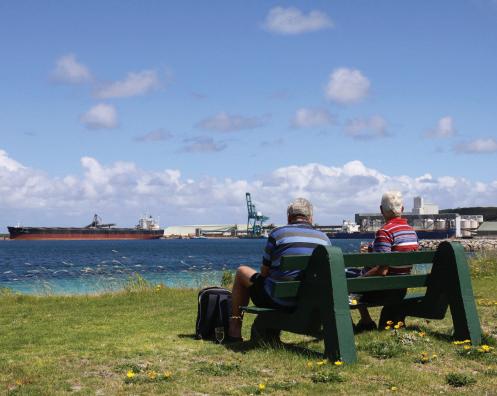
Growth projections are useful for effective planning for actions, projects and initiatives required to implement the Growth Plan vision. Four population scenarios are included in this Growth Plan as shown in Table 4 below. The population scenarios are based on the latest ABS figures from the 2011 Census. Further work needs to be undertaken to confirm the accuracy of available population and employment data within the next Growth Plan review. At this stage, population scenarios have been developed for the Shire of Esperance but not the Shires of Ravensthorpe or Dundas. A regional population scenario is likely to be developed over the next Growth Plan review period in consultation with the Shires of Dundas and Ravensthorpe and incorporating further regional population studies.
The Growth Plan population scenarios utilise aspirational rather than ‘business as usual’ growth rates with 3% population growth per annum required to meet the 2036 population target of 25, 000 people.
‘Planning our Future’ plans for an estimated Esperance population of 25,000 (3% growth per annum by 2036).
Even a 1% per annum growth scenario will require the population to increase at accelerated growth rates against the average rate of growth over the last ten years. Our largest settlement, Esperance has the land capacity to accommodate significantly increased population. Growth is dependent on new employment opportunities and the development of economic drivers, as well as the provision of social and community infrastructure and enabling infrastructure, at least at the same exponential rate to ensure that quality of life and prosperity is maintained and the growing population can be provided for.
The region has a good supply of available land for future residential, commercial and industrial development to support growth. There are identified environmental constraints in proximity to town sites, such as protected wetlands in Esperance, but there remains a significant quantity of existing infill land, strategic land parcels and significant opportunity to increase residential yields within town centres and across the majority of town sites.
We will develop land use strategies and adopt a sequential approach to the release of land (with a focus on use of urban, brownfield land in preference to out of centre, greenfield land), so Shires will be able to plan effectively through the statutory planning system, for increased population and economic growth. Incentives will be developed at a State and Local level to encourage the redevelopment and reuse of urban land.
The Department of Planning is currently undertaking land supply audits across the sub-region which will better inform land supply issues and constraints and quantify available land supply for future development across the region.
Regular monitoring of development, land demand and supply will enable agencies to respond quickly and efficiently to growth pressures. Early planning and provision of infrastructure will enable development to come forward at the right time. A flexible planning system will reduce ‘red tape’ whilst delivering quality development with positive community and environmental outcomes.
A significant component of achieving aspirational rather than ‘business-as-usual’ growth, is the acceptance by all agencies that infrastructure needs to be developed as an enabler rather than the responsive approach currently undertaken.


Our region will comprise diverse and thriving business, industry and service hubs where innovative opportunities are actively pursued and fostered through:
• A wealth of diverse and quality employment opportunities;
• Attraction and retention of knowledge and investment, people and skills;
• Supportive business environments; and
• Sustainable growth supported by innovative industry.
A number of key economic issues are identified for the region.
• Shortage of available rental accommodation
• Affordable Housing
• Cost of freight
• Small business closures – support for SMEs
• Increase in energy costs and impact of peak oil on business, food and energy security
• Lack of tourism accommodation options - quality, choice, affordability
• Development of tourism industry required
• Quality of transport networks including state highways and local roads
• Shortage of labour and skilled workers
• Lack of competitive air travel
• Impact of online competition on local business
• Investment attraction for small business and retail
• Industry retention and attraction
• Declining agricultural workforce
A number of key economic drivers and opportunities are identified following the Growth Plan due diligence and community engagement process (see Figure 5 overleaf). Agriculture is a mature industry with potential for growth in areas of research, development and innovation as well as value-adding to primary production. The Esperance Port Sea and Land Multi-User Iron Ore Upgrade, together with Transport Corridor improvements, will be significant drivers for growth.
Our ability to compete in an increasingly scarce labour market, to retain existing residents and attract additional people to the region, will be critical to meeting our vision for growth. Our current low unemployment rate may hinder economic growth unless new employees, with appropriate skills and experience, can be attracted and accommodated in the region. Parts of the region, particularly Esperance, are undergoing an accommodation crisis. With a shortage of rental properties and inflating rents, there is both a housing affordability and availability issue. The Esperance SuperTowns Project Team has investigated suitable accommodation opportunities with Government and private sector stakeholders and we will endeavour to deliver short-term and long-term accommodation solutions to facilitate growth and mitigate negative
• Emerging ‘digital’ economy and access to faster internet (NBN)
• Port Access Corridor Project
• Inland Rail Freight Corridor upgrades
• Esperance Port - Iron Ore Upgrade - Containerisation
• Airport upgrades to enable carrier competition and larger aircraft
• Skills and workforce development
• Skills and workforce development (live and work in region)
• Fly-in Fly-out and Drive-in Drive out
• Isolated geography – opportunity for piloting and test projects
• Small and Medium Enterprise (SME) development
• Workforce attraction
• Differentiated offer from the communities across the region
• Value adding to agriculture and food production
• Innovative medical delivery including Telehealth
• Maximising use of strategically located public land
• Eco-tourism – unique offer
• Infill development within the existing Esperance town site
• Expansion of resources sector, including the yilgarn province
• Opportunities to leverage off Recherche Archipelago
• “Middletown” significant development opportunity
• Education and training hub - co-locating tertiary education and training facilities with industry
• Ageing population
• Value-adding to agricultural produce
• Diversification of agricultural industries
• Secondary processing e.g. abbatoirs
• Industry and Investment Attraction
• Expansion and development of fishing and aquaculture industries
• Developing markets for agri-forestry
• Business Retention and Expansion
• Bandy Creek Harbour Redevelopment
impacts on the existing community. Accommodation solutions will consider both short-term and long-term, housing options and will take into consideration our existing tourism accommodation and local housing market.
We will develop our communities as high amenity settlements with a variety of active and passive lifestyle options, and the provision of excellent education and healthcare to support a ‘whole-of-life’ residence within our region. This will be critical to attract and expand our workforce.
Sustainable economic growth is central to our vision, as this will generate prosperity, attract and retain people and promote social inclusion. The region has a fairly strong and vibrant strategic economy. However, to accommodate growth the economic sector will need to diversify and become more innovative. The prosperity and sustainability of our communities will be encouraged through the development of strategies that support local businesses, value add to existing industries, encourage business investment and attract diverse employment opportunities. The region’s economy will be supported through the preparation of regional and local economic development strategies which will act as roadmaps to identify priorities and investment opportunities. Integral to delivering our desired economic outcomes will be our pragmatic, multi-stakeholder governance structure that will recognise and act upon changing opportunities, as the local and global economy evolves.
This program is a priority project for Esperance, to address the initial stages of economic development planning and strategy required to assist the region achieve its vision for growth. The program will
commence later this year and will inform the next review of this ‘Planning our Future’ Growth Plan. The Program incorporates six project areas that will provide a strategy to build upon our existing competitive advantages, build local capacity and actively restructure the economy for sustained, resilient growth. The Program will align with regional economic strategies. The Economic Development Program comprises the development of an Enterprise Investment Unit, Economic Profiling, a Supply Chain Study, an Industry/ Investment Attraction Study, an Economic Development Implementation Plan and Land Use Strategy for Public Land.
Our local economy specialises in the production and export of primary goods to external markets including agricultural and resource goods from Local, Regional and State activities. Esperance provides a logistics and supply base for many farms and mine sites. The Esperance Port represents a significant aspect of the region’s comparative advantage. Currently employing over 100 FTEs, it will be a major channel for the export of regionally and State produced commodities in nickel, iron ore and agricultural production. The Port is crucial to the region’s economic potential and the potential expansion will act as a catalyst for economic growth in the region and the State. The Portlink project is also key to the expansion of the transport corridors and resource areas between Esperance, the Goldfields and Port Hedland and in developing better links to the Eastern States. Linkages between Port infrastructure and future Scaddan coal exports may result in significant ‘inland port’ infrastructure with a potential lifespan of up to 60 years.
Within the regional economy, high growth industries include logistics, education and services to agriculture and the resources sector. Small to medium sized businesses will play a significant role in developing and maintaining the character and vibrancy of our communities, with most recent growth located within real estate and financial services. Agriculture will maintain its role as the region’s dominant economic driver. There are numerous mining operations in Ravensthorpe and Dundas with expanding opportunities in the Goldfields and the Yilgarn province. To assist growth, Esperance will investigate the development of a small business incubator and an industrial strategy and emphasise partnerships between the public and private sectors and opportunities to link business and industry with education and training. We will support the marketing and branding of Esperance and the South-East region, in order to promote economic development and to attract inward investment.
Opportunities exist for the region to play a larger role in the continued development and growth of regional food production. Potential exists to localise and ‘value add’ to the primary production chain, including secondary processing and the development of new products. The export accreditation of the local Abattoirs maybe an example of an opportunity to process food for external markets with economic and employment benefits remaining local. It will also allow our local economy to brand and differentiate itself. Further opportunities exist in the production, blending and milling of grains for specialised markets.
The State Government, together with other agencies and the private sector, is actively engaged in enhancing agriculture and food productions. The region will play a key part in agricultural research and
development and continued innovation. For example, the South East Premium Wheat Growers Association’s (SEPWA) Strategic Plan highlights the importance of research and development and value adding opportunities to the ability of local growers to achieve premium pricing for their crop. The region will also have a role to play in the expansion of specialist professional services (e.g. agricultural science and agronomy) and potentially hosting more intensive horticultural and specialist activities (e.g. greenhouses, vineyards etc).
Agriculture
and food production will continue to play a leading role in the growth of the South-East region.
While the fishing industry’s ability to expand wild fish capture in the future maybe constrained by regulations and stock availability, there will be options to explore aquaculture industries and the development of new fisheries.
Planned, targeted economic investment will support regional food production and agricultural expansion.
We will continue to grow the local tourism industry as a key component for growth. There are significant tourism opportunities within each Shire including a range of key projects such as the Norseman Visitor Gateway Centre Project, the development of the Esperance Waterfront and promoting Esperance as a Cruise Ship destination. A critical issue for the tourism industry in the region is the lack of accommodation, particularly affordable quality accommodation. All accommodation types will be improved, however attracting private investment for this to occur may be a challenge. A range of incentives will be investigated to generate investor take up of higher end accommodation development opportunities.
Other opportunities to capture tourism growth include targeted infrastructure aimed at attracting and supporting ‘grey nomad’ caravan travellers entering or leaving WA and infrastructure to attract and support backpackers and young travellers as a potential source of seasonal labour or longer-term migrant workers.
We will strengthen our economic base by supporting the development of education and training opportunities linked to business and industry. By providing opportunities for ‘up skilling’ we will retain and attract more people to stay and work. Given our low unemployment and high workforce participation rates in the region, we will need to attract skilled workers from intra-state, inter-state and overseas to continue to grow our economy. A priority project for our region is the redevelopment of the Goldfields Institute of Technology, Esperance Campus, which will lead to improved facilities, training and links with industry and offer opportunities for local residents to train and work within the region.
Schedule 1 contains the key priority actions, projects and initiatives for the region to ‘Grow our Economy’. The priorities are a combination of Local Government and State Government priorities which will be undertaken or implemented to facilitate economic growth. For the Growth Plan period 2012-2016, a
priority project for the Esperance SuperTowns Project Team is to implement the Esperance Economic Development Program which has received funding from RDL through the SuperTowns Program and is expected to be initiated this year. The full list of actions, projects and initiatives to ‘Grow our Economy’ is located within the Growth Plan Implementation Schedule (document 2).
ScHEDULE 1
GUIDING PRINcIPLE 1 – GROw OUR EcONOmy
STRATEGy AREAS kEy AcTIONS, PROJEcTS AND INITIATIvES LEAD AGENcIES TImEFRAmE
Investment and Industry Attraction
• Esperance Economic Development Program Esperance SuperTown Project Team
• Esperance Port Sea and Land Multiuser Iron Ore Upgrade
Esperance Port Sea and Land Dept of Transport Private Sector
• Marketing and Branding Strategy for Esperance Esperance SuperTown Project Team
• Explore the opportunities and constraints for Esperance and other regional settlements to become a destination for regional based FIFO / DIDO
• Promote Esperance as a suitable centre for Research and Development (R&D) and Pilot Projects i.e. renewable energy, telehealth, emerging digital technologies
Esperance
SuperTown Project Team
Resource Companies
Esperance SuperTown Project Team
Short term
Short to Medium term
Short term
Short term
Skills and Training
Business Development
• Redevelopment of the Goldfields Institute of Technology, Esperance Campus
Goldfields Institute of Technology (formerly VTEC)
• Investigate the development of a Small Business Incubator Esperance SuperTown Project Team
• Industrial Strategy for Esperance Shire of Esperance
Short to Medium term
Short term
Medium term
Short term
Agriculture and Food
• Support food production industries and agricultural innovation
• Explore opportunities to value add to agricultural industries
• Explore opportunities for forestry industry including use of existing plantation resources
• Explore opportunities for niche food production including the expanding organic market
Department of Agriculture and Food
TImEFRAmE
Short to Medium term
Department of Agriculture and Food Short to Medium term
Department of Agriculture and Food Short term
Department of Agriculture and Food Private Sector
Aquaculture and Fishing
Tourism
• Explore and support opportunities for aquaculture and fishing industries within the region.
Department of Fisheries Private Sector
Short to Medium term
Medium term
• Norseman Visitor Gateway Centre Shire of Dundas Short term
• Local Tourism Planning Strategy for Esperance Shire of Esperance Short term
• Shire of Dundas Tourist Information Bays and Norseman Tourist Trails
• Develop Esperance as a cruise ship destination and support the development of a tourism node at Twilight Beach.
• Develop a range of tourism accommodation options in Esperance
Shire of Dundas Medium term
Shire of Esperance Tourism Esperance Short term
Esperance SuperTown Project Team
- Tourism Australia
- Tourism WA
Short term key
Short term 2012 - 2016
Medium Term 2016 - 2026
Longer Term 2026 – 2036
‘Planning our Future’ - November 2012 36
Our region will comprise relaxed, family friendly communities with vibrant hearts and a wealth of activities for all, we will ensure that our communities:
• Enjoy a diverse range of social, recreational and volunteer opportunities;
• Respect diversity and be inclusive of all peoples;
• Are safe and healthy with a focus on wellbeing;
• Have a strong connection with our unique environment; and
• Celebrate their rich cultural heritage.
A number of key community issues are identified for the region.
• Access to affordable housing
• Retention of population particularly younger people
• Access to specialised health services
• Diminishing volunteer base
• Community capacity building and leadership
• New Esperance library facility
• Community wellbeing
• Management of sports, recreation and cultural clubs and organisations
• Addressing Indigenous representation and wellbeing
• Limited recreational opportunities for younger people
• Revitalision for communities of Sinclair and Nulsen
• Stewardship of the natural environment
• Local resource capability to plan and deliver on identified projects
• Access to mental health services
• Planning and provision for ageing population including aged accommodation and home care
• Access to GP services
• Promoting arts and cultural programs and events
• Inadequate and ageing community infrastructure
• Social impacts of FIFO / DIDO
• Improvements to tertiary education facilities and courses
• Emergency services planning and provision
• Maintaining primacy of regional town centres as the heart of communities
• Limited internet access
• Potential sea level rise due to climate change
• Recreational use of environmental assets
Access to health and mental health services is of primary concern to our regional communities. Regional residents and visitors will require the same standard and reliability of medical care as in the metropolitan areas. Access to health services is a major factor influencing decisions on whether to live in a regional area or leave. Better access to health services will attract and retain people and provide the quality of care and treatment our communities deserve. To encourage our people to enjoy healthy active lifestyles and sustain strong communities, we will support initiatives for volunteering, recreation, sporting and educational activities. Priority projects for the region include the Esperance Health Campus Redevelopment and colocated Medical Centre. These projects are required to meet the needs of the existing and future communities of the region. State Agencies including WA Country Health Service will commence planning for the Growth Plan population scenarios to ensure that future stages of the Hospital Redevelopment and other health services, including access to GP’s, are timely to meet the growing needs of the population.
Access to quality health services including GPs is a key community priority
We will endeavour to ensure that sufficient housing is available to accommodate the needs of our communities in ways that are responsive to their changing size, distribution and demographics. Meeting the demand for short-term accommodation as well as affordable long term solutions, is paramount to combat availability, affordability, social inclusion and attraction and retention issues in the region. Housing provision of the right choice, type and affordability is critical to retaining existing and attracting new residents and removing barriers to employment and economic growth. The increasing number and proportion of older people in our communities places particular demands on the region, in terms of accommodation, care and access to medical services. A proactive approach is desirable, encouraging community services to locate in residential areas and increasing residential density in areas that are already well-serviced. We will encourage sustainable development that makes best use of resources and enables opportunities to foster social inclusion. Local affordable housing strategies will be developed resulting in new accommodation projects to deliver short to long term opportunities for our communities.
The development of affordable and key worker housing is a priority issue for Esperance and the region. During 2012, Esperance rental vacancy rates have been below 2%
We will encourage the development of happy, safe, vibrant, diverse, inclusive and growing communities where people feel valued and connected. Cultural development will be a significant contributing factor to the attraction of new people and the provision of new employment opportunities for all segments of our communities. Comprehensive planning is required at the local level for community infrastructure and development. At a State level, the Department of Sport and Recreation is undertaking sports and recreation audits which are vital to the planning and provision of new facilities. New facilities will be colocated wherever possible, for optimum community benefit. Creating active urban places is important to the
health and wellbeing of our communities and incorporating active space into spatial planning and design projects will be crucial. We will acknowledge the importance of and support the development of our Indigenous communities. We will also ensure that our heritage is adequately protected and will continue to celebrate and develop our diverse culture.
A local priority project to strengthen our communities is the Greater Sports Ground and Indoor Stadium Redevelopment, Esperance
Schedule 2 contains the key priority actions, projects and initiatives for the region to ‘Strengthen our Communities’. The priorities are a combination of Local Government and State Government priorities which will be undertaken or implemented to facilitate community development and wellbeing. For the Growth Plan period 2012-2016, a priority project for the Esperance SuperTowns Project Team is to implement the Greater Sports Ground and Indoor Stadium Redevelopment. The project is identified within the RDA/GEDC Strategic Development Plan 2011-2021 and initial work has commenced on preliminary design concepts to support a business case. The Redevelopment of the Esperance Health Campus and improved access to health and mental health services in the region is of paramount priority.
Refer to the Implementation Schedule (document 2) for the full list of community actions, projects and initiatives across the region, which includes plans for the development of the Hopetoun Town Hall and Community Centre and the development of the Norseman Aged Accommodation project.
ScHEDULE
Health and wellbeing
• Support the development of a permanent co-located Medical Centre at Esperance Health Campus
• Esperance Health Campus Redevelopment – Stages 1 and 2
• Encourage WA Country Health and other health service providers undertake planning for Growth Plan population scenarios across the region
• Support the development of a Wellbeing Centre incorporating mental health accommodation and wellbeing services in Esperance
WA Country Health Service, Department of Health
WA Country Health Service, Department of Health
Esperance SuperTown Project Team with WA Country Health Service
Esperance SuperTown Project Team
Health provider TBC
TImEFRAmE
Short to Medium term
Short term
Short to Long term
Medium to Long term
Housing and Accommodation
• Esperance Accommodation Options Projects to relieve rental shortages & availability of affordable housing
• Support the development of the Norseman Aged Accommodation project
• Explore the requirements for aged accommodation and services for seniors in Esperance
• Investigate opportunities to undertake a Local Housing Affordability Study in Esperance
LEAD AGENcy TImEFRAmE
Esperance SuperTown Project Team
Department of Housing
Shire of Dundas
Short term
Short term
Education
community Planning
Sports and Recreation, culture and
Arts
• Esperance Residential College Accommodation upgrade and redevelopment of the Esperance Primary School
Esperance SuperTown Project Team
Department of Housing with Esperance
SuperTown Project Team
WA Country High School Hostel Authority
Department of Education
• Esperance Anglican Community School expansion Anglican Schools Commission
• Support other school expansion projects across the region to cater for future demand
• Encourage Department of Education to undertake planning for Growth Plan population scenarios across the region
• Community Infrastructure Plan
• Planning and development of Residential Facilities for Children
• Greater Sports Ground and Indoor Stadium Redevelopment in Esperance
• Esperance Library Redevelopment
Local Government State Government Esperance SuperTown
Project Team
Esperance SuperTown Project Team with
Department of Education
Shire of Esperance
Department of Child Protection
Esperance SuperTown Project Team
- Shire of Esperance
Short to Medium term
Short term
Short term
Short to Medium term
Short to Medium term
Short term
Short to Medium Term
Short term
Shire of Esperance / private sector Medium term
STRATEGy AREAS
Sports and Recreation,
culture and Arts
(continued)
• Development of the Hopetoun Town Hall and Community Centre Project
• Support the preparation of an Esperance Public Art Strategy
• Deliver a vibrant, diverse and inclusive community arts and engagement program
• Refurbishment of the Esperance Civic Centre as the primary entertainment and business conference centre for the region.
• Development and implementation of Cultural plans
• Development and implementation of sports and recreational audits and strategies
• Support and strengthen the volunteer sector
LEAD AGENcy TImEFRAmE
Shire of Ravensthorpe Short term
Shire of Esperance
Esperance Community Arts
Short to Medium term
Short to Medium term
Shire of Esperance Medium term
Emergency Services
Timeframes
• Support the resourcing and capability of emergency services (paid or volunteer) in line with expanding risks and workloads associated with development and population growth.
• Investigate opportunities for increased paid emergency services workers and potential for co-located emergency services and justice precinct
State and Local Government
Department of Sports and Recreation, Local Government
Local Government
State Government
State Government
Local Government
Esperance SuperTown
Project Team with WA Police FESA
Department of Justice
St John’s Ambulance
Short to Medium term
Short term
Short to Long term
Short to Long term
Medium to Long term
Our built form will capture our unique character and setting; connecting people and places and integrating sustainable infrastructure that meets the needs of our growing communities and economy by:
• Creating active and vibrant spaces;
• Developing well connected and liveable communities;
• Encouraging design elements to celebrate our bush and coast communities; and
• Supporting sustainable building and infrastructure design.
A number of key built environment issues are identified for the region.
• Low density built form
• Lack of connectivity between Esperance town centre and waterfront areas
• Lack of infill sewer to town centre areas limiting development / redevelopment opportunities
• Connectivity issues between traditional retail centre and ‘box’ style shopping centre in Esperance
• Urban sprawl - lack of sequential approach to land release
• Future land of strategic land parcels and endowed land
• Location of current Esperance wastewater treatment plant in central strategic development area
• Noise and traffic impacts from transport corridors
• Town centres not pedestrian friendly
Despite the remoteness of the region, it has many characteristics of liveable places including ease of movement and lack of congestion, a favourable climate free of extremes, unique heritage connections, attractive public spaces, pristine parks and beaches, generally low levels of crime and high levels of public safety. We will aim to maintain and enhance these characteristics. In Esperance, the Town Centre Revitalisation and Waterfront projects have been initiated, and there are emerging plans to revitalise the
main streets in Ravensthorpe and Hopetoun. Revitalisation planning in Norseman has already commenced. These projects will make the region a more attractive place to live, work and visit.
Enhancing the quality of places within the region is an integral part of this Growth Plan that will improve the region’s distinctiveness and economic competitiveness, complement environmental objectives, and directly contribute to a better quality of life for our communities. To achieve this we will deliver sustainable vibrant places with attractive
In Esperance, the Town Centre Revitalisation and Waterfront Redevelopment has been initiated, and there are emerging plans to revitalise the main streets in Ravensthorpe and Hopetoun.
local character that complements the setting. The community engagement feedback for the Growth Plan process demonstrated that there is a need to improve the effectiveness of local planning tools to enhance the quality and vibrancy of Esperance’s built environment. At a local level, we will positively influence the outcomes of planning schemes, masterplans and development proposals. This will ensure that development complements the setting of places and existing natural and historic assets. Iconic heritage assets such as the Esperance Tanker Jetty will be redeveloped for future generations to enjoy. Development will be integrated with existing community infrastructure – wherever possible, new infrastructure will be co-located to optimise its coverage and capability. Development will make the best use of existing infrastructure and services to maximise efficiency, minimise the cost to public funds, improve accessibility for pedestrians, cyclists and public transport.
Improving the liveability of urban places and the quality of design in public areas will emphasise the role of people and communities in the region and will increase functionality and amenity qualities. These qualities are desirable to attract and retain population. To enhance future liveability we will promote accessible services, and the creation of well-designed, high quality and accessible residential, commercial, industrial and recreational spaces. Development of sustainable transport networks, including the promotion of alternative means of transport will provide more options for the region.
The Cooperative Research Centre’s Water Sensitive Cities project indicates that $100 billion from the Water sector and $550 billion dollars from the private sector will be invested in Green Infrastructure and Water Sensitive Urban Design over the next 15 years. This funding will be aimed at cities and regional centres and presents opportunities for our region. Combining different land uses with green space will encourage the enjoyment of places for residents and visitors. Incorporating waste management solutions into development, ensuring that development minimises carbon emissions and energy use, will protect our environment and enhance our reputation as an attractive place to live, work and visit. We will ensure that climate change resilience is incorporated into built environments by:
• developing multifunctional green spaces with integrated Green Infrastructure;
• reducing stormwater run-off and rain water reuse through water sensitive urban design; and
• protecting vulnerable areas from coastal erosion, flood risk and rising sea levels.
$650 billion will be invested in Green Infrastructure and Water Sensitive Urban Design in Australia over the next 15 years.
Schedule 3 (overleaf) contains the key priority actions, projects and initiatives for the region to ‘Create a Sustainable Built Environment’. The priorities are a combination of Local government and State Government priorities which will be undertaken or implemented to facilitate sustainable built environments. For the Growth Plan period 2012-2016, priorities for the Esperance SuperTowns Project Team are the implementation of the Esperance Town Centre Revitalisation Project and the Esperance Waterfront Project.
These projects have been initiated and will reaffirm Esperance as the regional economic hub by creating a vibrant and thriving town centre that will benefit the whole region. The region’s other town centres will be revitalised to attract and retain people.
The Implementation Schedule (document 2) contains a detailed list of all sustainable built environment actions, projects and initiatives across the region.
GUIDING PRINcIPLE 3 - cREATE A SUSTAINABLE BUILT ENvIRONmENT
STRATEGy AREAS kEy AcTIONS, PROJEcTS OR INITIATIvES LEAD AGENcy TImEFRAmE
Revitalisation
• Esperance Waterfront Redevelopment
• Esperance Town Centre Revitalisation Project including Precinct Planning for Museum Park and linkages to the Waterfront
• Redevelop the iconic Esperance Tanker Jetty
• Hopetoun Main Street Upgrade project
• Ravensthorpe Streetscape Revitalisation project
• Norseman Footpath Replacement Program
• Ravensthorpe Local Administration Building project
• Explore options for relocating and/ or co-locating State Government agency buildings and land holdings in Esperance to facilitate revitalisation.
Shire of Esperance Short term
Esperance SuperTown Project Team
Shire of Esperance
Short term
Shire of Esperance Short to Medium term
Shire of Ravensthorpe Short term
Shire of Ravensthorpe Short term
Shire of Dundas
Shire of Ravensthorpe
Department of Building Management and Works
Short to Medium term
Short to Medium term
Short to Medium term
Strategic Development Areas
Spatial Planning
• Undertake planning for the Bandy Creek Harbour Redevelopment in Esperance
• Advocate for the relocation of the Fuel Depot and pipeline and CBH depot from Esperance Middletown
• Undertake planning for the Esperance Middletown Strategic Development Area
• Undertake growth planning for the region’s smaller town sites and adopt spatial growth options for settlements
• Review Local Planning Strategies and Schemes and incorporate growth plan principles.
• Explore options for sustainable transport in Esperance including cycle ways and public transport
• Green infrastructure strategies
Department of Planning
Department of Transport
Landcorp
Esperance SuperTown
Project Team
Private Sector
Esperance SuperTown Project Team
Department of Planning
Landcorp
Department of Planning
Esperance SuperTown Project Team
Landcorp
Local Government
Department of Planning
Medium term
Local Government
Department of Planning
Medium term
Shire of Esperance
Public Transport Authority
Shire of Esperance
Short to Medium term
Short term
Short to Medium term
Medium term
Short to Medium term
Our region has unique bush and coastal communities that will engage and interact harmoniously with their environment, and support the:
• Sustainable stewardship of our natural assets;
• Conservation and enhancement of our natural environment;
• Responsible access, use and enjoyment of our natural environment; and
• Development of sustainable town sites, integrating natural elements and connecting us to our environment.
A number of key natural environment issues are identified for the region.
• Stewardship of natural environment
• Coastal and marine natural resource management
• Impacts of Federal Government Clean Energy Program
• Balancing coastal and non-coastal environmental priorities.
• Sustainability issues including food security
• Recreational use of the Recherche Archipelago, Class A nature reserves
• Integration of green infrastructure into development
• Potential environmental risks and impacts of proposed Port expansion
• Clearing of remnant vegetation
• Recreational management of environmental assets
• Climate change including sea level rise, droughts and storm events
• Managing invasive weeds and spread of ‘dieback’.
• Balancing land use, agriculture and development with environmental values
• Health impacts of growth and development
• Lack of environmental mapping for the Esperance region (fauna, flora and flood)
• Environmental management of Port and other major industries
• Decreasing rainfall for the region and impacts on groundwater supply
• Salinity
Our communities recognise that the environmental aspects of the region are a significant part of its heritage, values and identity. There are a number of National Parks, protected wetlands woodlands and hundreds of kilometres of dramatic coastline, that provide a number of conservation, recreation and tourism opportunities. Undertaking environmental studies and implementing biodiversity management plans will protect our natural assets. Where appropriate, we will promote and enhance these places and landscapes for conservation, as economic drivers and visitor destinations. It is important to recognise that our proximity
to our natural environment is part of our lifestyle and spirit. Therefore, we will ensure that these elements are captured in the marketing, branding, tourism and recreation opportunities offered by our region.
An increase in the use of roads, railway, airports and the Esperance Port is likely to place pressure on the environment through generation of emissions (noise, dust and odour) and an increase in the requirement for water and power supply. An increase in population is likely to place pressure on existing remnant vegetation within the region through potential clearing and pressure on significant natural features. We recognise the future implications of climate change on the region, and are committed to ensuring that future land use and development does not exacerbate the impacts or increase the risk or cost to our communities. Land will be appropriately zoned in order to manage potential flood risks and other climate change impacts. Knowing more about the potential impacts of climate change will also help us to accurately target infrastructure investment. We will encourage energy efficient development and seek to reduce its impact on climate change through site layout, design and development provisions and regulations. The impact of new development on climate change will be mitigated by:
• Supporting the use of sustainable forms of energy (e.g. solar panels, wind turbines);
• Encouraging the use of water sensitive urban design; and
• Protecting, maintaining and enhancing biodiversity through the protection of our natural heritage, greening of the built environment, landscaping and the protection and maintenance of and provision for wildlife habitats.
Schedule 4 (overleaf) contains the key priority actions, projects and initiatives for the region. The priorities are a combination of Local government and State Government priorities which will be undertaken or implemented to protect and enhance our natural environment. The State Government is embarking on a significant number of environmental projects and initiatives, including the Goldfields-Esperance Conservation Estate Management Plan and the State Barrier (Biosecurity) Fence. Locally, we will encourage responsible stewardship of our natural environment and monitor growth to manage pressures on our natural assets.The Implementation Schedule (document 2) contains a detailed list of environmental actions, projects and initiatives across the region.
A key priority is to implement key biodiversity management plans for our environmental assets.
GUIDING PRINcIPLE 4 - PROTEcT AND ENHANcE OUR NATURAL ENvIRONmENT
STRATEGy AREAS kEy AcTIONS, PROJEcTS OR INITIATIvES LEAD AGENcy TImEFRAmE
Sustainability
coastal management
• Climate Change studies and planning
• Explore opportunities to establish a ‘Grow Green’ Sustainability Program within the region to encourage sustainable behaviours including reducing waste, increasing re-use and recycling, energy efficiency, planning for food and energy security, green star rated design and buildings, localism initiatives and community engagement.
• Monitor growth aspirations and pressures to protect environmental assets in line with community values.
• Encourage an exemplar standard of environmental management within our local industries.
• Prepare and implement a Coastal Recreation Management Plan for Esperance
State Government
Esperance SuperTown Project Team Local Government South Coast Natural Resource Management
Short to Medium term
Medium term
Esperance SuperTown Project Team
Short to Long term
Local Government State Government Private sector
Shire of Esperance
Short to Medium Term
Short term
Bio-diversity Planning
Eco-tourism
Open Space
• Implement key biodiversity management plans for environmental assets in the sub-region including Lake Warden Catchment and Lake Gore.
• Environmental studies for the Esperance sub-region including mapping of flora, fauna, flooding and acid sulphate soils.
• NatureBank Eco-tourism project at Cape Le Grand, Esperance
• Develop and implement public open space strategy
key to Schedule Timeframes
Short term 2012 - 2016
Medium Term 2016 - 2026
Longer Term 2026 – 2036
Timeframes are indicative unless specified.
LEAD AGENcy TImEFRAmE
Short to Long term
Department of the Environment
South Coast
Natural Resource Management
Department of the Environment
Tourism WA
Medium term
Medium term
Shire of Esperance Medium term

We will deliver sustainable, integrated and high quality, modern infrastructure to meet our social, economic and environmental needs, to create well connected, liveable communities, vibrant economies and sustainable employment opportunities, by:
• Adopting a whole-of-government approach towards infrastructure provision to meet our current and future needs for growth;
• Providing quality regional infrastructure at a similar or better standard to metropolitan areas;
• Embracing emerging infrastructure opportunities and being leaders in the State for delivering new and innovative ‘region building’ infrastructure;
• Improving investment in regional infrastructure to ensure greater prosperity, productivity and growth of our communities; and
• Supporting public-private partnerships and other mechanisms to help deliver efficient and timely infrastructure projects.
A number of key infrastructure issues are identified for the region.
• Waste elimination - waste reduction
• Urgent need for new waste management facility in Esperance
• Need for airport upgrades
• Quality and safety of State Highways into and out of the region, including safety risk of heavy haulage through Ravensthorpe town site
• Slow and unreliable internet service
• Poor mobile service to remote areas
• Maintenance of local road networks
• Pollution and noise impacts from transport corridors and industry
• Major transport corridor improvements
• Lack of infill sewer to town centre areas restricting development potential
• Wastewater management
• Esperance Wind Farm infrastructure near end of lifespan
• Future water supplies for growing population
• Lack of renewable energy supply
• Location of current wastewater treatment plant in central strategic development area
• Power pole replacement within Esperance town centre - undergrounding required
Enabling infrastructure will be planned for and implemented to provide for current and future population pressures. The Esperance SuperTowns Project Team will continue to consult with Government Agencies, local organisations and communities to ascertain critical infrastructure needs. Limited information is currently available from infrastructure and utility providers to adequately plan for the Growth Plan population scenarios, however agencies will incorporate Growth Plan population scenarios into their forward planning.
Further consultation and investigation will be undertaken to ascertain infrastructure thresholds and barriers that may exist with regard to infrastructure and utilities provision to meet accelerated demand. The State Government is intent on taking a co-ordinated, high level approach to infrastructure planning across Government Agencies and the utility providers to ensure that Growth Plan population scenarios are incorporated into State planning activities. The Growth Plan supports this high level, coordinated approach at a State Government level to deliver key infrastructure.
Our future infrastructure will embrace new, sustainable and alternative technologies. Infrastructure will enhance our standard of living, integrating into our built and natural environment and resulting in positive community and environmental impacts. Green infrastructure techniques will be adopted locally to integrate our essential infrastructure with our built and natural environments and to encourage greater efficiencies and sustainability. Infrastructure will act as an enabler for economic development in the region.
A regional waste management strategy will be required to minimise waste production and encouraging recycling, reuse and appropriate disposal of waste. It will identify ways for regional collaboration on waste management matters. In the short term, Esperance will find an alternative to its existing landfill site, as the Wylie Bay facility will not have its licence renewed and is set to close in 2016. Waste management support will be required regarding the planning, approval, design and construction of a lined waste cell at Wylie Bay, as well as site selection, design and costing of a new facility. Post closure planning and management is also required for the Wylie Bay Facility. This is a priority project for the Shire of Esperance 2012 - 2016.
The region requires access to safe, reliable and sustainable transport options providing the best available connections to our regional cities and the metropolitan areas. We will upgrade our network of State Highways and transport corridors to reflect their status as major routes enabling economic growth and development. There will be a range of alternative modes of local transportation developed to provide local residents with greater flexibility and choice.
The State Highway network will be a major economic enabler, vital to transporting freight into and out of the region and providing our isolated communities with access to our neighbouring communities, our nearest regional cities of Kalgoorlie and Albany, and essential links to Perth. The vastness of the region demands extensive lengths of road which are costly to maintain. The logistics industry is a major growth industry and employer in the region and quality, safe and reliable road and transportation networks will be key to this industry’s growth. Significant road construction projects are underway in the region including Stage 1 of the Esperance Port Access Corridor Project which will unlock the potential for additional and more efficient road and rail freight capacity at the Esperance Port. We will support the development of the Ravensthorpe Heavy Haulage Bypass which is identified as a regional priority and a major economic driver and will significantly improve the safety of road traffic through the Ravensthorpe town site.
The maintenance and upkeep of the local regional road network places a heavy financial burden on Local Governments but will remain a necessary requirement to enable economic development, growth and community connections within the region. Offering alternative local transport choices and new methods to fund and manage road assets will assist in maintaining quality road networks.
We will benefit considerably from airport upgrades to facilitate larger aircraft and additional carriers operating within the region. There is community demand for more competitive air fares particularly from those needing to travel outside the region to access medical services and from the tourism industry. The long drives represents a barrier to WA residents seeking short breaks within our region – more competitive air fares and flight schedules will facilitate growth in this sector of the tourism industry. Interest from the private sector to use Esperance as a regional base for fly-out or drive-out workers within the region (live in Esperance or the region – fly-out or drive-out to work in the region) will be investigated. The opportunities and issues associated with FIFO/ DIDO will need to be explored by our community, including family friendly rosters and safe, sustainable accommodation and transportation options.
Rail upgrades will be undertaken to improve the freight corridor to the Goldfields and beyond. The Portlink project will have an extensive impact on our region, facilitating greater trade with Goldfields, the Yilgarn province and beyond. Longer term, we will pioneer a vision for high speed passenger rail connections with our regional cities and Perth as a sustainable, safe and efficient mode of transport into the second half of this century
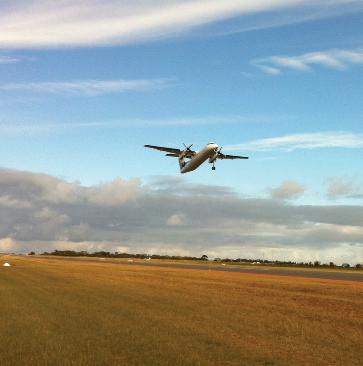
The Esperance Port has been identified in Guiding Principle 1: Growing our Economy, as a major economic driver for the region. It also represents major infrastructure of State significance and will be a premier Port for the import and export of goods for our region and our State. Many of our infrastructure priorities, such as transport corridor upgrades, will improve the efficiency of the Port enabling more competitive exports and employment opportunities.
The digital economy will be a key driver for our isolated region. The lack of good quality digital access is a barrier to relocating to our region. Faster and more reliable internet access and improved telecommunications will allow our regional communities to be connected globally despite our geographical isolation and will facilitate a new digital economy allowing local business, education and health providers and community organisations to compete and develop effectively. We will optimise opportunities for the digital economy including faster internet access to enable our region to grow and to attract and retain population.
Optimising opportunities for the digital economy including faster internet access is a priority.
We will develop a regional energy strategy to provide an appropriate and sustainable response to growth. This will involve the development of the renewable energy sector, which will provide more sustainable forms of energy while adding greater diversity to the economy. There will be significant opportunities for us to develop and expand local, renewable and cost effective energy sources. There is likely to be extensive Federal and private sector investment available in the renewable energy sector over the coming decades. As an isolated region, with many of our settlements ‘off the grid’ and with available solar, wind, ocean and geo-thermal energy potential, we will embrace the abundant opportunity for renewable pilots. We will build our leadership and innovation in the renewable sector already demonstrated in the region through successful projects, such as the Esperance Wind Farm and renewables on mine sites.
Horizon Power will undertake a demand and energy forecast within the short-term which will identify future capacity and infrastructure requirements incorporating Growth Plan population scenarios. Verve Energy has identified that the existing Esperance Wind Farm is nearing the end of its lifespan and will undertake feasibility planning for upgrades or a new renewable energy development. We will strongly support the continued use of wind energy as desired by our community. We will pursue investigations with Worley Parsons (Gas) regarding future capacity, gas infrastructure requirements and demand.
A reliable and safe water supply is critical to support population and economic growth. In regional areas, a potable water supply to town areas will be essential but we will also ensure water supply to support primary production and resources exploration and mining. Climate change impacts, including decreasing rainfall, increased storm events and more intense rainfall during the summer season, together with issues around salinity associated with groundwater extraction, mean that better water planning and water efficiency will be paramount. We will undertake a Regional Water Management Strategy, led by the Department of Water, to inform future planning, development and protection of water resources. The Water Corporation will commence planning for water supply for the next 30 years incorporating a ‘business as usual’ and our Growth Plan growth population scenario of 25,000 people by 2036. This planning will determine whether groundwater and other existing supplies will be sufficient to meet growth demands or whether alternative sources will be required. We will continue to liaise with these agencies on water supply matters across the region.
The Water Corporation has identified the Esperance Wastewater Treatment Plant and Sewer Infill as regional priorities for the next ten years. Water Corporation will commence wastewater planning using a ‘business as usual’ and our Growth Plan growth population scenario, to develop feasibility for a new Wastewater Treatment Plant at Wylie Bay, Esperance and will investigate options for the decommissioning
of the existing Middletown Plant in Esperance. Esperance already recycles wastewater for public and private area reticulation but we will embrace the significant opportunities for increasing the treatment and recycling of waste water and the extraction of nutrients from wastewater, including a potential for a third pipe system for grey water recycling for new subdivision developments. We will continue to liaise with the Water Corporation on wastewater across the region.
Community infrastructure planning is discussed under Guiding Principle 2: Strengthen our Communities and is as vital as civil and digital infrastructure requirements to eliminate barriers to regional living, such as lack of access to health services and to enable sustainable growth.
Figure 6 demonstrates some identified infrastructure requirements programmed or required for Esperance and the South-East region during the Growth Plan period to up 2036. These timeframes and requirements are indicative only and are dependent on further investigation and consultation with infrastructure and utilities providers through a regional based infrastructure planning strategy. There are currently gaps in the infrastructure planning required for Growth Plan population thresholds, highlighting the importance of a co-ordinated, regional approach to infrastructure planning for growth.
The indicative timeframes for programmed infrastructure planning and projects will likely need to be brought forward to meet increased demand associated with accelerated population growth. Government Agencies will commence forward planning for Growth Plan population scenarios in the short-term.
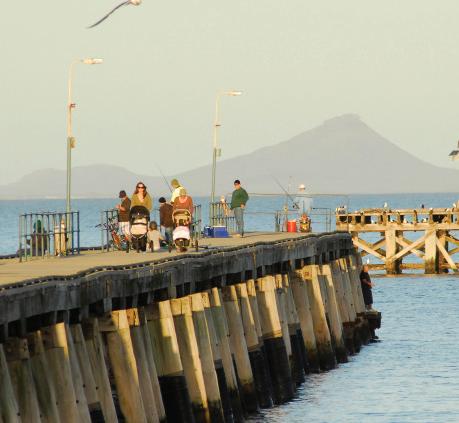
1. Horizon Power demand & energy forecast (2014)
2. Possible new capacity requirement for electricity generation for SuperTowns high growth scenario (2016)
3. End of operation for existing Verve Energy Windfarm at Ten Mile Lagoon (2018)
4. Possible new sub-station, transformer and feeders for redevelopment areas for SuperTowns high growth scenario (2020)
1. Line current Esperance waste facility (2012)
2. Investigate alternative waste facility management and locations (2013)
3. Decommission and remediate current waste facility (2016)
1. Esperance Airport Upgrades (2012)
2. Port Access Corridor (2014)
3. Public Transport Feasibility Planning (2014)
4. Barney Hill Realignment (2015)
5. Ravensthorpe Heavy Haulage Road (2015)
6. Esperance Port Multi User Iron Ore Upgrade (2015)
1. Undertake wastewater planningWater Corporation (2013)
2. Construct infill sewer areas 17A & 18A [Esperance town centre] (2013)
3. New waste water treatment plant at Wylie Bay (2020)
4. Decommission existing waste water treatment plant [middle town redevelopment area] (2032)
1. Water supply planning - Water Corporation (2013)
2. Possible district drainage study (2015)
1. Esperance Interim Medical Centre (2013)
2. Esperance Hospital Redevelopment Stage 1 (2015)
3. Goldfields Institute of Technology Campus Redevelopment (2015)
1. Possible additional capacity required in Esperance (2013)
2. Remote mobile towers (2014)
3. Possible roll out of NBN (2015)
Schedule 5 (overleaf) contains the key priority actions, projects and initiatives for the region. The priorities are a combination of Local Government and State Government priorities which will be undertaken or implemented to deliver timely and efficient enabling infrastructure. For the Growth Plan period 2012-2016, a priority project for the Esperance SuperTowns Project Team is to implement the Esperance Waste Facility Project. There is an urgent need to find an alternative to the Wylie Bay Landfill Site. The project is identified within the RDA/GEDC Strategic Development Plan 2011-2021 and initial work has commenced on finding a suitable location as well as investigating alternative management solutions to landfill.
The Ravensthorpe heavy haulage bypass, is a priority infrastructure project for the region as identified in the RDA/GEDC Strategic Development Plan 2011 - 2021.
Infrastructure Planning
Transport Road
Transport Air
Transport Rail
Energy
LEAD AGENcy TImEFRAmE
• Develop a regional infrastructure plan Department of Planning Short term
• Optimise opportunities for the digital economy including faster internet access
• Ravensthorpe Heavy Haulage Bypass
• Esperance Port Access Corridor Stage 1
• Undertake planning for further stages of the Esperance Port Access Corridor
• Improve the standard and safety of the regions road network including the South Coast Highway and Coolgardie-Esperance Highway
• Esperance Airport upgrades to facilitate additional carriers and larger aircraft
• Upgrading the regions rail corridor to facilitate trade with Goldfields, the yilgarn province and beyond.
• Portlink project
- Intermodal Freight Transport Terminal
- Rail realignment around KalgoorlieBoulder
- Sealing of road between Wiluna to Meekatharra.
Federal Government Local Digital Economy Working group
Short term
Shire of Ravensthorpe and Main Roads WA Short term
Main Roads WA with John Holland Short term Medium term
Main Roads WA Short term
Main Roads WA Short term
Shire of Esperance Short to Medium term
Brookfield Rail Short term
Goldfields-Esperance Development Commission
Department of Transport Department of Regional Development and Lands
• Develop a regional energy strategy Goldfields-Esperance Development Commission
• Undergrounding of power in Esperance Town Centre (to complement the Town Centre Revitalisation Project)
Short to Medium term
Short term
Horizon Power Short term
Energy
(continued)
waste
water
wastewater
• Sustainable and renewable energy production for the future.
• Esperance Waste Facility – planning and construction of new waste facility
• Water supply planning for next 30 years incorporating Growth Plan population scenario.
• Infill Sewer in Esperance Town Centre - Areas 17A and 18A
• Planning and design for future sewer infill requirements in Esperance and the region.
• Wastewater planning for next 30 years incorporating Growth Plan population scenario.
• Relocation of existing Wastewater Treatment Plant (WWTP) and construction of replacement WWTP in Esperance
Verve Energy
Horizon Power Office of Energy State Government
Short term
Shire of Esperance Short term
Water Corporation
Water Corporation
Water Corporation
Water Corporation
Water Corporation
Short term
Short term
Short to Medium term
Short term
Medium to long term
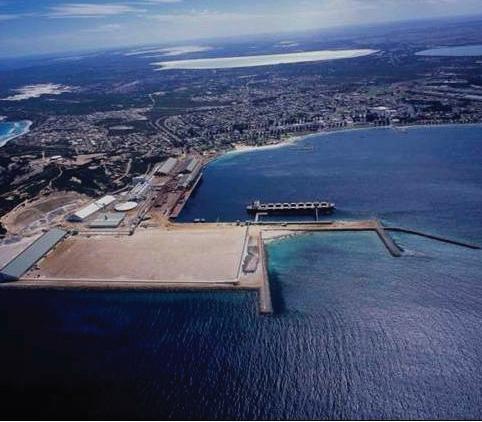
We will embrace collaborative and proactive leadership delivering on the values and aspirations of our communities through:
• A cross-organisational approach delivered through strategic partnerships;
• Community ownership through active engagement; and
• A focus on delivering shared outcomes.
A number of key governance issues have been identified for the region.
• Ideas but no action
• Local resourcing to plan and develop projects and initiatives
• Layers of agencies and organisations
• Community leadership
• Planning bureaucracy
• Inter-agency co-operation
A number of core actions will be required to successfully deliver the vision, guiding principles, actions, projects and initiatives of this Growth Plan. The Implementation Schedule sets out all actions, projects and initiatives required to take us on the road to growth, prosperity and wellbeing including the key priorities listed within this Growth Plan.
Key to the delivery of this Growth Plan and successful governance into the future will be the:
• Collaborative partnerships between Local and State Government and Government and the private sector;
• Community ownership of our Growth Plan;
• Governance organisations that listen and respond effectively to our communities;
• Realising and achieving our goals - delivering on actions, projects and initiatives; and
• Reviewing our goals and aspirations in light of changing circumstances.
We will continue to work in collaboration towards our shared vision and aspirations together with our neighbours and stakeholders in the region. A Memorandum of Understanding (MOU) signed by the Shire of Esperance, the Goldfields-Esperance Development Commission and the Esperance Chamber of Commerce and Industry in September 2012, will form the basis for our collaborative working approach and co-ordination of the Growth Plan implementation. The Esperance SuperTowns Project Team organisations will continue to develop relationships with key stakeholders in the region and with the State to deliver the priorities of our Growth Plan.
The Growth Plan will be a living and adaptable plan able to respond to new data and information as it arises, changes in the economy and new local, regional and State plans and strategies. We will review the Growth Plan in the near future in light of the outcomes of the Esperance Economic
Development Program and emerging State Government land and population audits. This will be vital to guide future industry and investment attraction strategies and provide detailed direction on how to develop our region’s key economic drivers. This data will also help refine growth population scenarios to provide Government Agencies with up-to-date and accurate scenario data to enable effective and responsive planning for infrastructure and services. We will liaise with Local Governments in the region to develop regional population scenarios. We will develop performance indicators to monitor the progress of Growth Plan implementation and to ensure positive impacts for the communities of our region. Our collaborative governance will ensure that growth is balanced and results in prosperity, sustainability and social inclusion for all.
Planning for a growth of population up to 25,000 by 2036 will require a focus on industry and investment growth and expansion. We will need a new governance model utilising the collaborative approach already developed within the Growth Planning process. Options and models for this will be investigated as part of the Esperance Economic Development Program. Initial investigations suggest an ‘Enterprise Investment Unit’ comprised of local organisations with a targeted focus on industry and investment, will be a viable option to pursue.
A structure or model for delivering industry and investment growth and expansion must:
1. Be adequately resourced and empowered in terms of:
a. The necessary skill sets;
b. The physical human resources to get the increased volume of work done; and
c. The authority to call upon and leverage existing bureaucracies;
2. Focus on a mechanism to deliver the Growth Plan vision through a well crafted, practical and reasonable strategy that recognises the difference between what can be delivered by such a governance model and what lies outside of such an entity’s capacity to control or influence;
3. Have an investment and enterprise capacity over and above simply funding projects according to internal qualifying criteria;
4. Be transitional in nature recognising what needs to be and can be achieved in the short-term (critical timeframe) and over the subsequent period to 2021 and beyond to 2036;
5. Facilitate the ready development of hard and soft infrastructure required to generate growth including:
a. Capacity building infrastructure (i.e. utilities capacity, roads, housing etc.);
b. Industry specific enabling infrastructure (i.e. common user infrastructure, airport capacity etc.);
c. Essential population servicing infrastructure (i.e. hospitals and schools); and
d. Population driven infrastructure (i.e. retail & commercial offerings);
6. Have the capacity to:
a. Mobilise and approve funding of and investment in programs, initiatives and development opportunities, particularly in circumstances of market failure;
b. Enter into joint venture development opportunities, where appropriate, with the private sector to drive economic growth and development; and
drive/influence resource allocation decisions by key Government Agencies and departments as they relate to Esperance and the South-East region;
7. Have executive regulatory approval and planning control over development opportunities and proposals; and
8. Have legislative authority and resources to implement our Growth Plan.
Key Priorities for Innovative and Proactive Governance
Schedule 6 contains the key priority actions, projects and initiatives for the region to embrace innovative and proactive governance. For the Growth Plan period 2012-2016, a priority project for the Esperance SuperTowns Project Team is the ‘Esperance Enterprise Investment’ Unit model which will drive industry investment and attraction strategies at a local level.
STRATEGy
collaboration
• Continue local collaboration through the Memorandum of Agreement (MOU) between the Esperance SuperTowns Project Team partners, the Shire of Esperance, Goldfields-Esperance Development Commission and the Esperance Chamber of Commerce and Industry.
• Work collaboratively within the MOU framework with other local, regional and State stakeholders, including Shires of Dundas and Ravensthorpe.
LEAD AGENcy TImEFRAmE
Esperance SuperTown Project Team
Short to Long term
Governance
• Facilitate the ongoing implementation of the Esperance SuperTowns Program and the implementation of Growth Plan priorities.
• Advocate for the implementation of State Government agency key priority projects highlighted within the Growth Plan.
Esperance SuperTown Project Team
Local Government State Government
Private Sector
Esperance SuperTown Project Team
Esperance SuperTown Project Team
State government
Short to Long term
Short term
Short to Long term
ScHEDULE 6 cONTINUED
kEy
LEAD AGENcy TImEFRAmE
Governance • Continue to explore and refine options • Esperance • Short term (continued) for a local governance model for industry investment such as an Esperance Enterprise Investment Unit
Build Local
SuperTown Project Team
• Ensure there is local capacity and State Government
Esperance SuperTown Project Team
Short to Long capacity and resources within Esperance SuperTown Local Government term Resources Project Team and stakeholder organisations to implement the Growth Plan vision and priorities
community Engagement
• Establish Community Reference Group or other appropriate community engagement mechanisms for SuperTowns funded projects 2012 (Esperance Waterfront, Esperance Town Centre and Esperance Economic Development Program)
• Continue to actively engage with and respond to the community on Growth Plan issues.
• Prepare and implement a Communications and Engagement Plan to ensure open channels of communication with the community and timely updates by a variety of means on priority issues (website, newsletters, etc)
Esperance SuperTown Project Team
Short term
Esperance SuperTown Project Team
Esperance SuperTown Project Team
Short to Long term
Short term
Project • Prepare Business Cases for priority Esperance SuperTown Short to Medium Business projects in liaison with key Government Project Team term cases and non-government stakeholders. Local Government State Government
ScHEDULE 6 cONTINUED
STRATEGy AREAS
Review and Evaluation
• Review the Growth Plan and priorities on a regular basis.
• 4 year full review
• Minor reviews as required
• Refine Growth Plan population scenarios for the region based on publication of ABS Census data, emerging population data and outcomes of the Economic Development Program.
• Establish Key performance indicators to measure and evaluate Growth Plan implementation and monitor growth pressures.
key to Schedule Timeframes
Short term 2012 - 2016
Medium Term 2016 - 2026
Longer Term 2026 – 2036
LEAD AGENcy TImEFRAmE
Esperance SuperTown Project Team
State Government
Esperance SuperTown Project Team
State Government
Short to long term
Short to long term
Esperance SuperTown Project Team
Timeframes are indicative unless specified.

Short term
An Implementation Schedule accompanying this Plan can be found in Document 2. It contains actions, projects and initiatives to implement our vision. The actions, projects and initiatives are partly comprised of existing programs, which are underway. Others are those initiatives that have been identified within the Esperance Interim Growth Plan and through community and stakeholder engagement which are required to achieve the vision of our communities. All will be driven by lead agencies.
To measure the effectiveness of this Growth Plan, monitoring will be ongoing. This will be achieved through the development of performance indicators, monitoring the progress of the Implementation Schedule and by recording State and Local Government reporting mechanisms (e.g. economic performance indicators, land use audits etc).
This Growth Plan will undergo a detailed review every four years, or earlier, should it be considered necessary. Reviewing the plan regularly can ensure that our communities can respond effectively to changing trends and new developments.
The Growth Plan will be reviewed in the near future in light of the outcomes of the Esperance Economic Development Program, updated Census information and emerging State Government land and population audits.
This document was prepared by the Goldfields-Esperance Development Commission and Shire of Esperance, on behalf of the Esperance SuperTown Project Team. While the information contained in this document is provided in good faith and believed to be accurate at the time of print, appropriate advice should be obtained in relation to any information in this document. The Goldfields-Esperance Development Commission and Shire of Esperance shall in no way be liable for any loss sustained or incurred by anyone relying on the information provided.
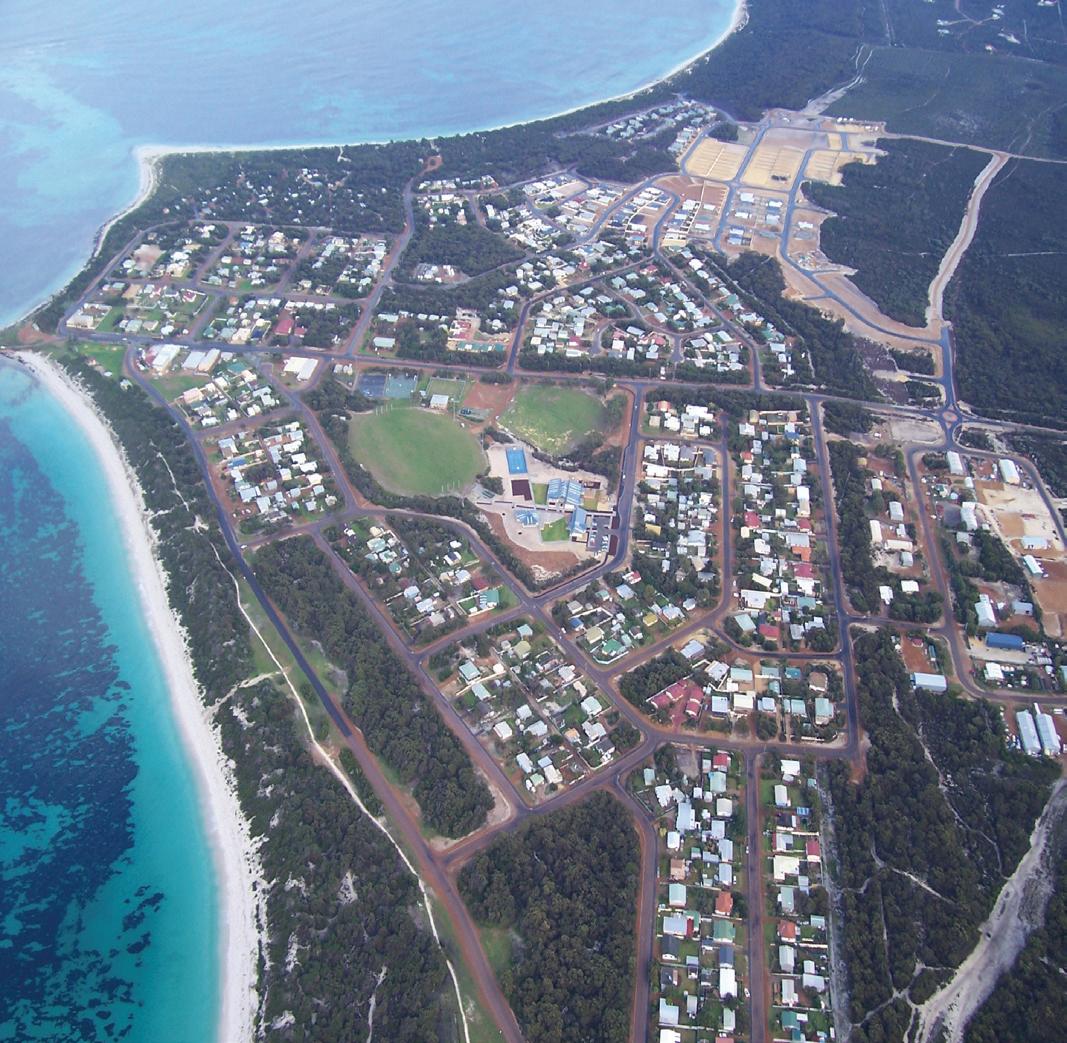

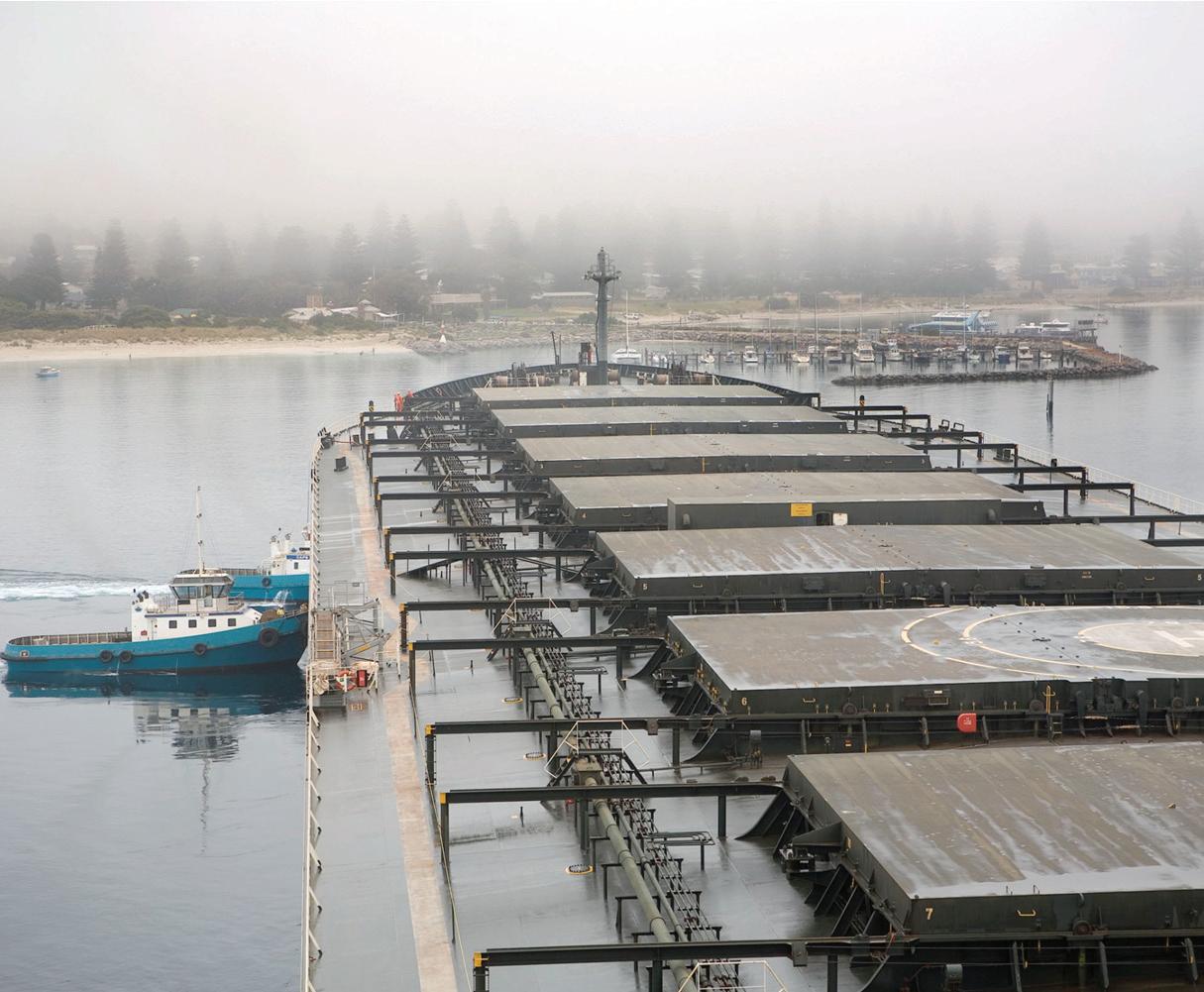
For more information about Esperance and the South East region visit:
http://www.esperance.wa.gov.au/ http://www.dundas.wa.gov.au/ http://ravensthorpe.wa.gov.au/ http://www.gedc.wa.gov.au/ http://www.esperancecci.com.au/ http://www.rdl.wa.gov.au/regions/goldfields/Pages/default.aspx
